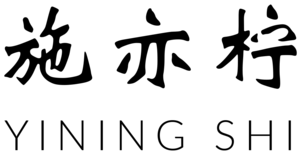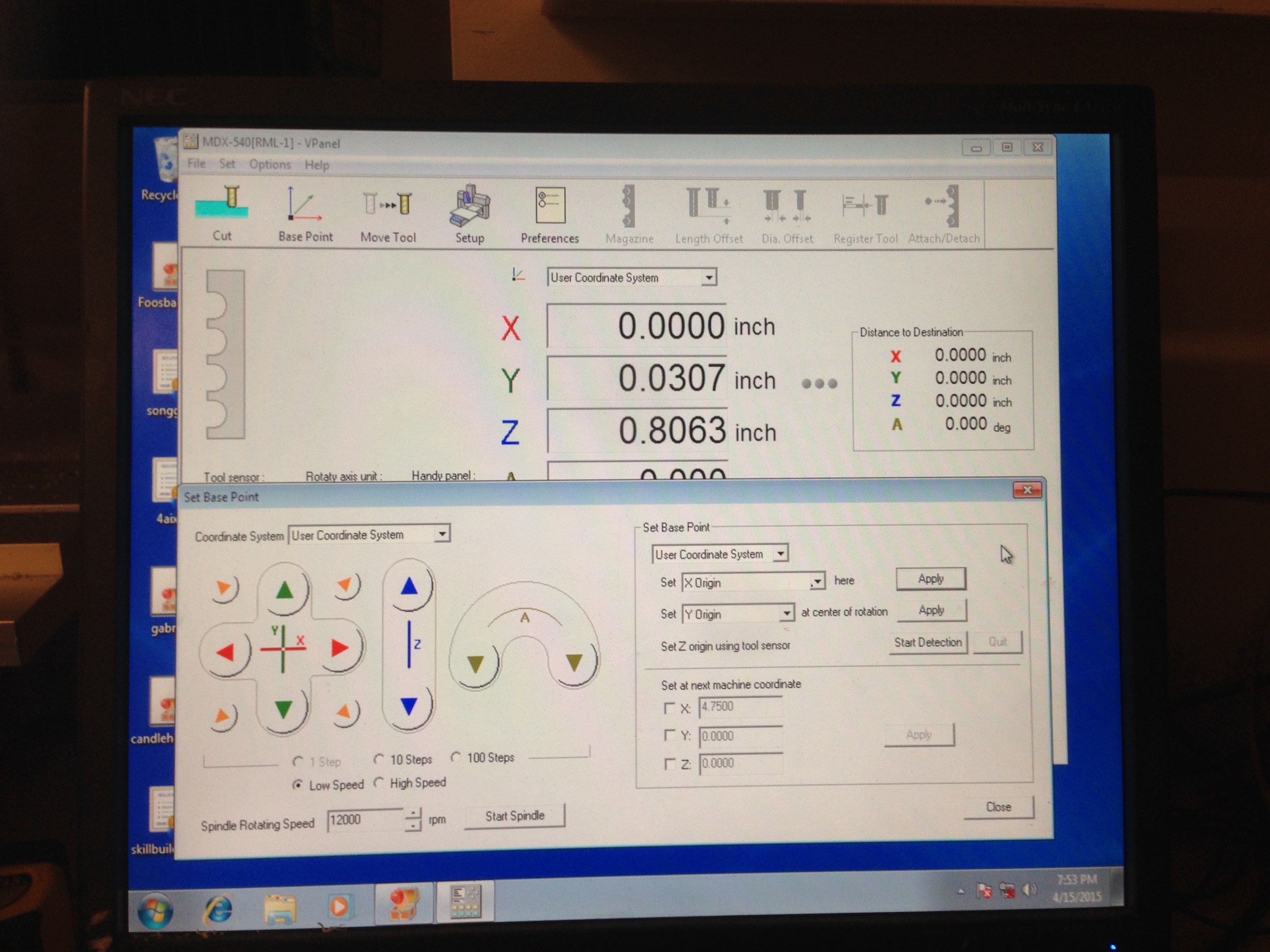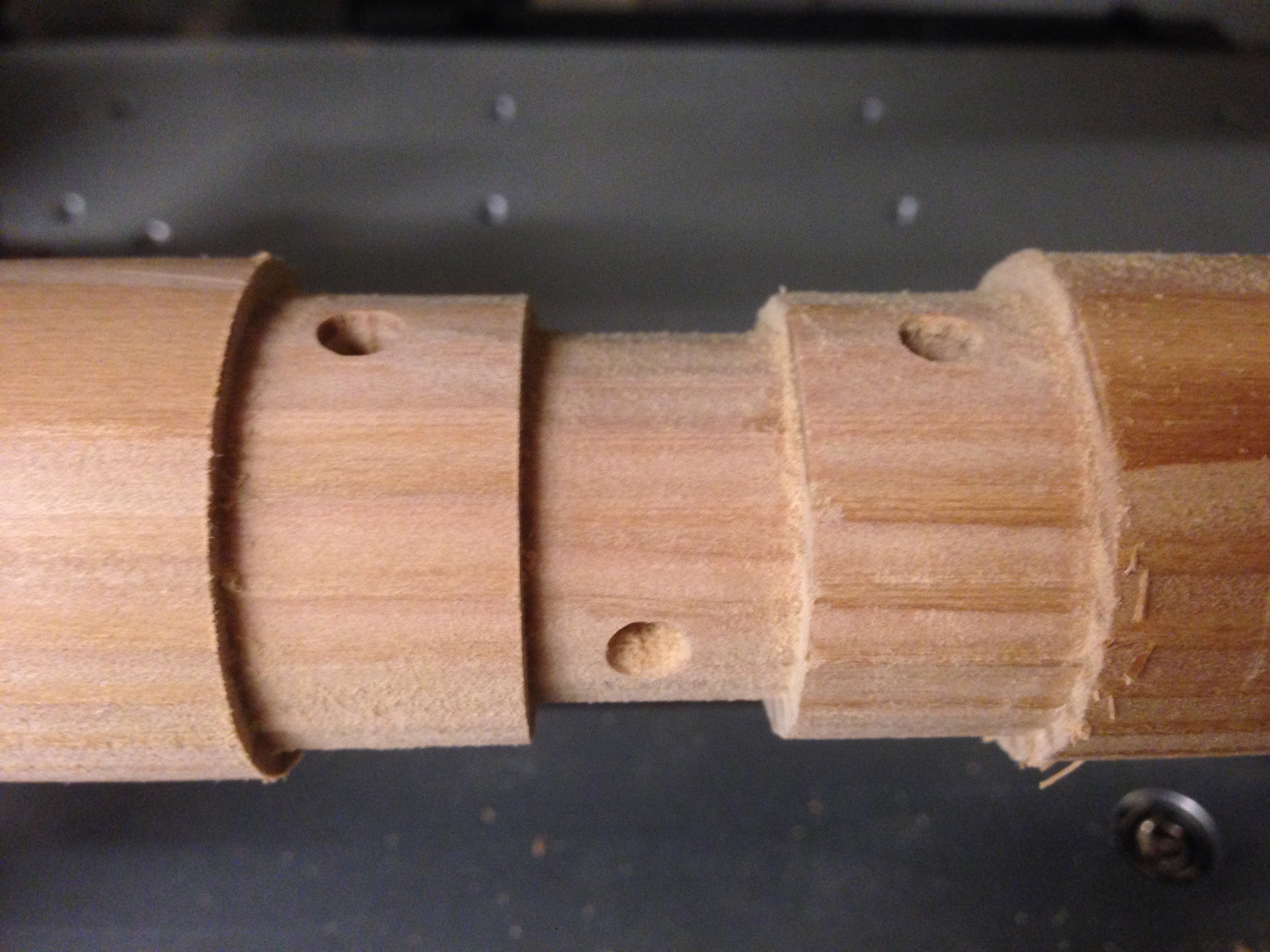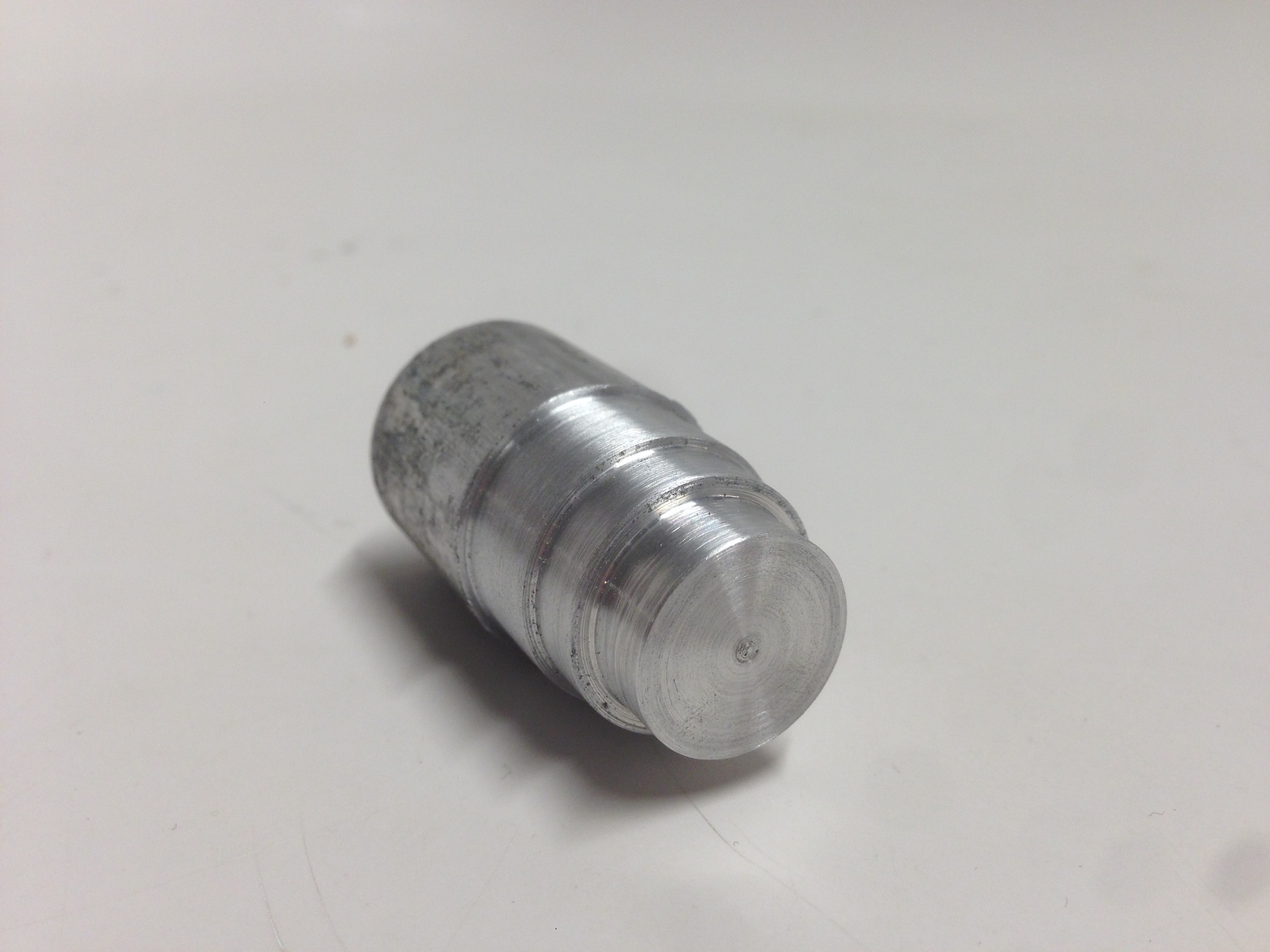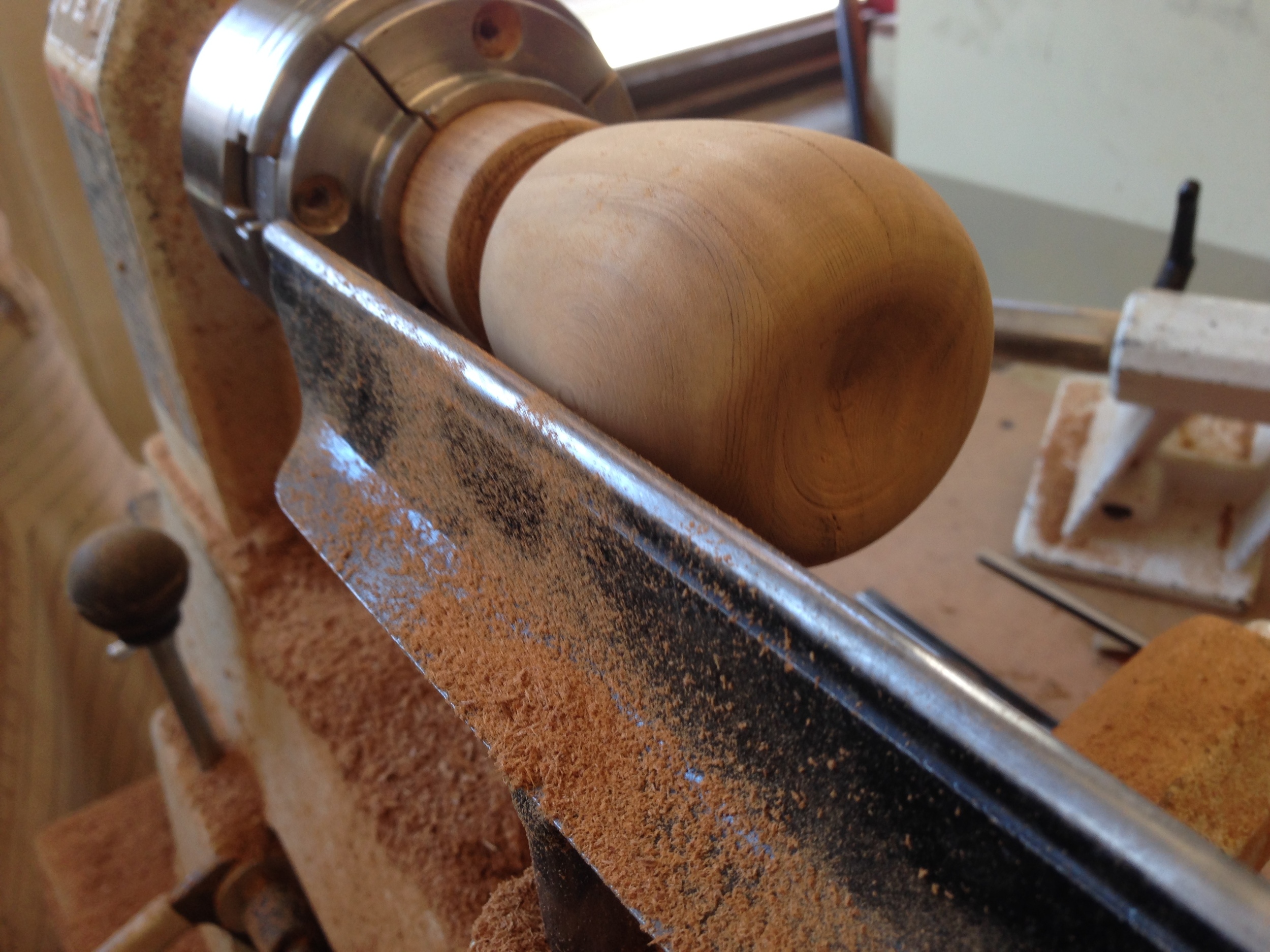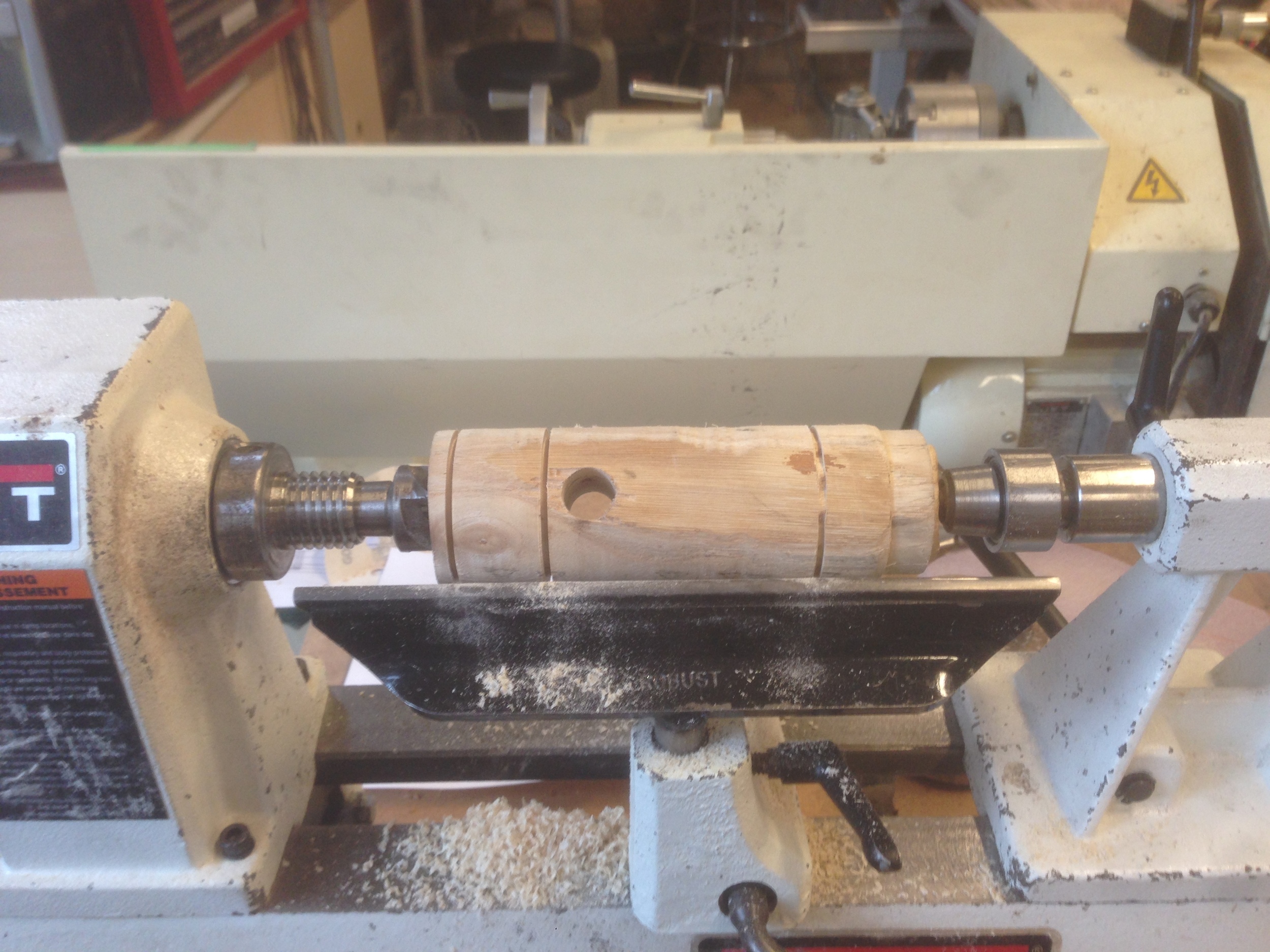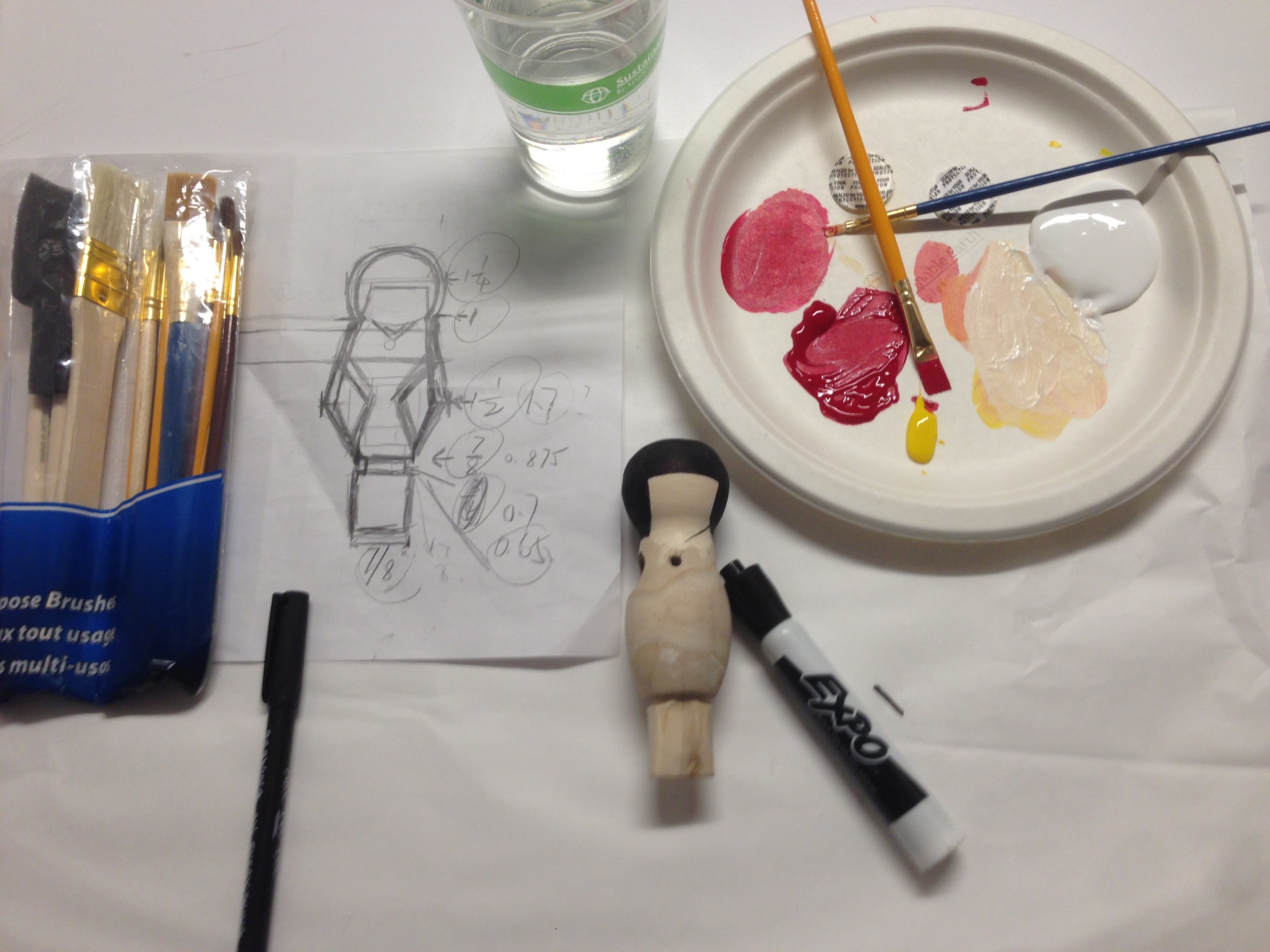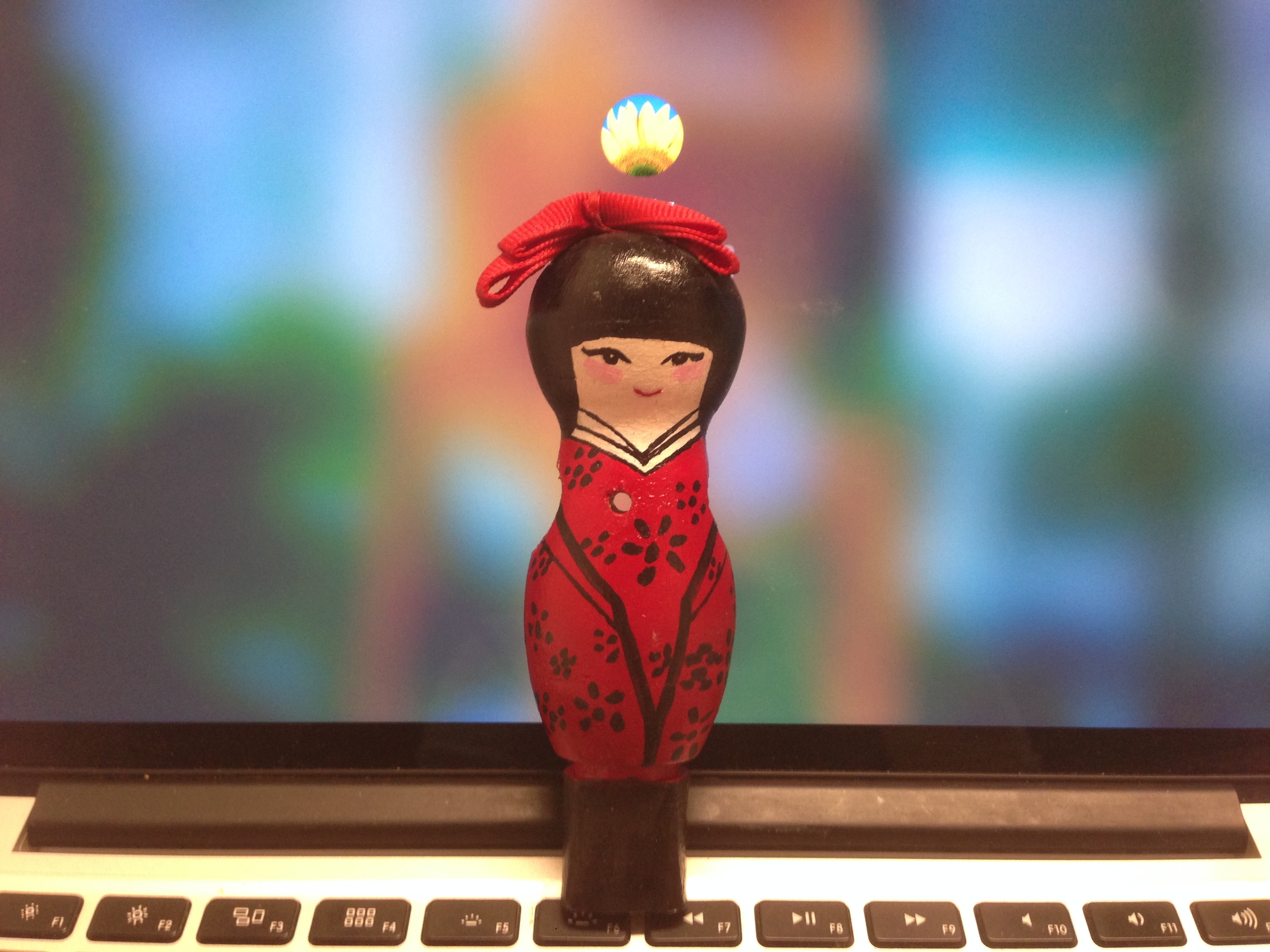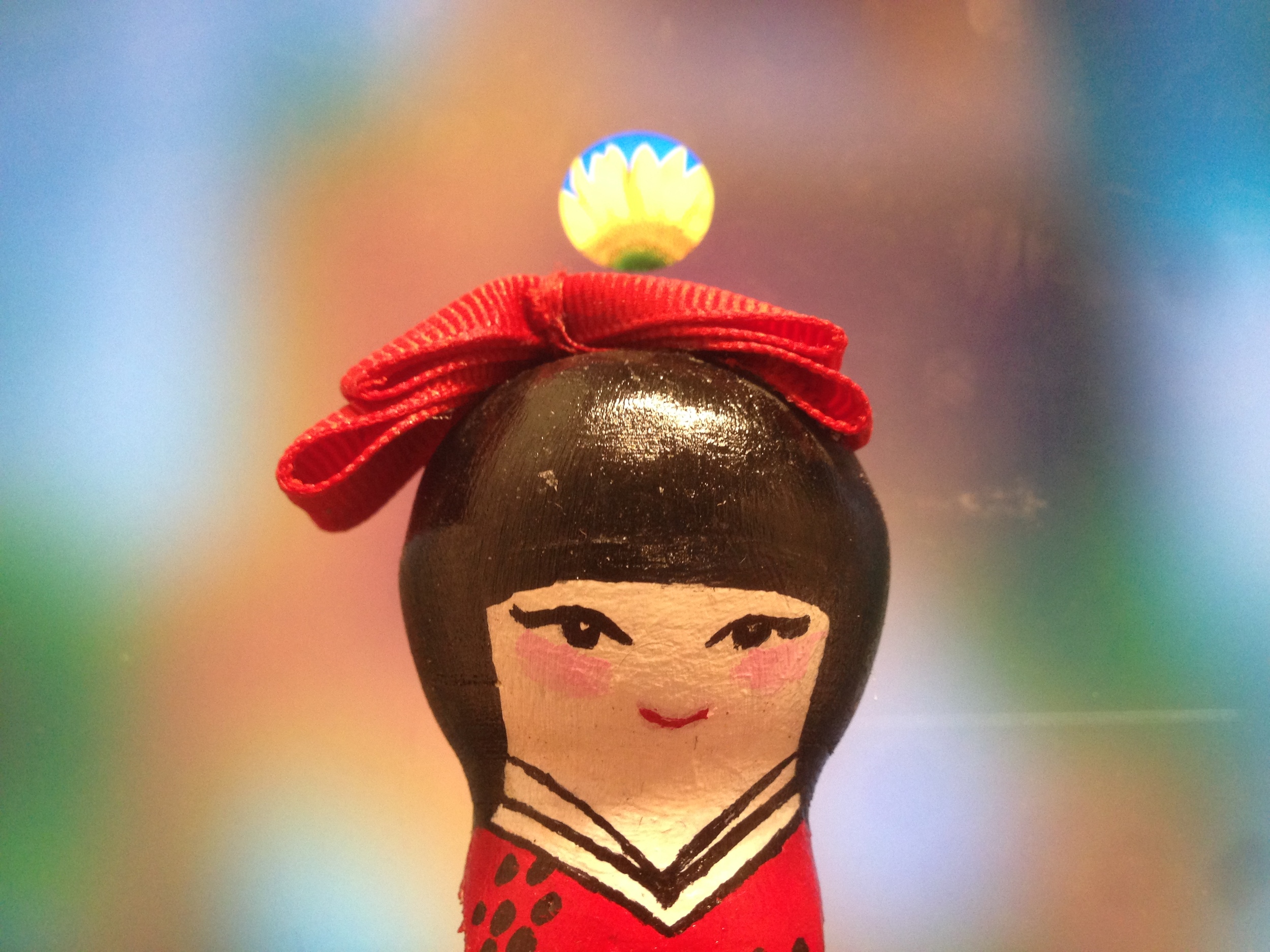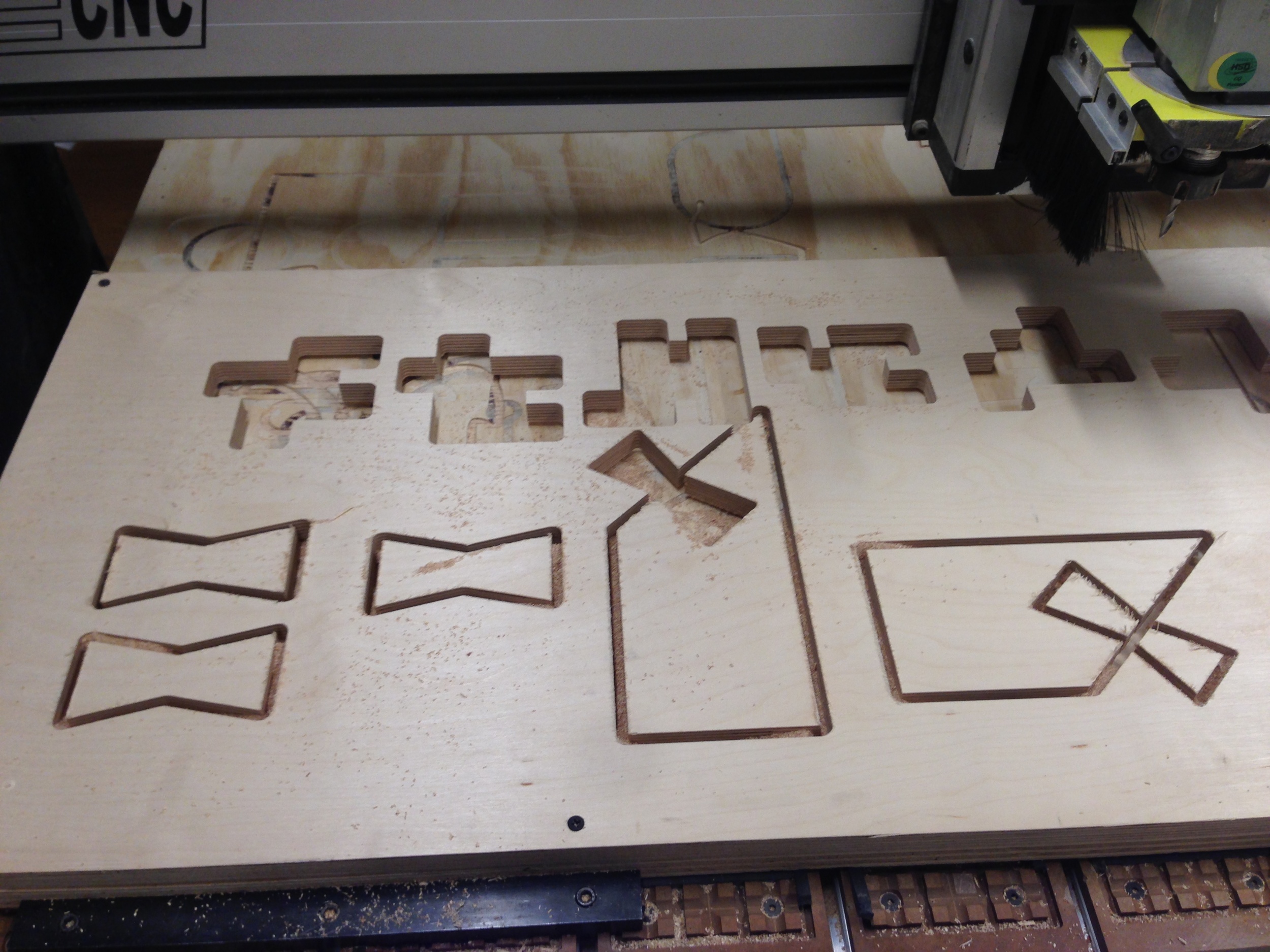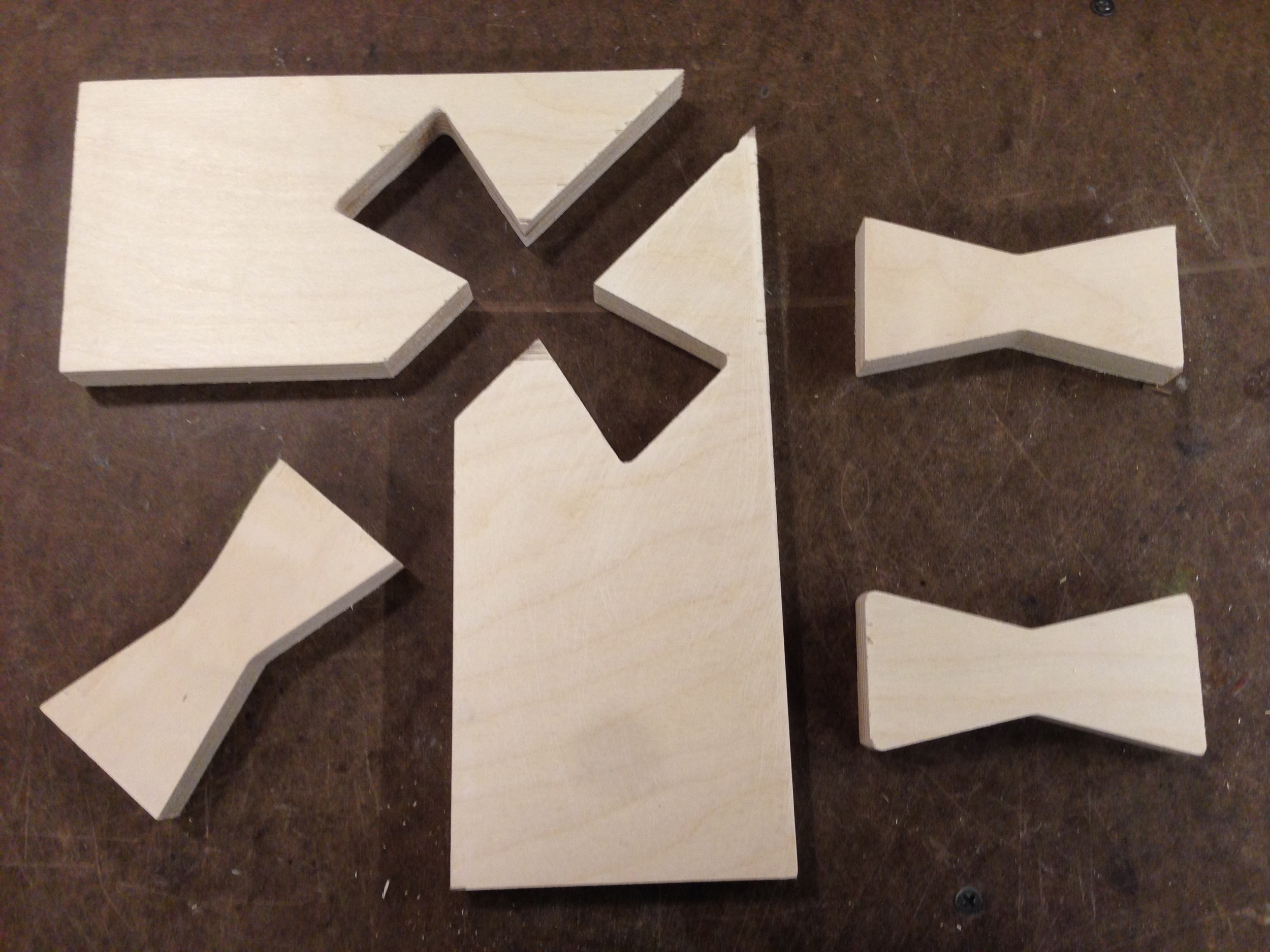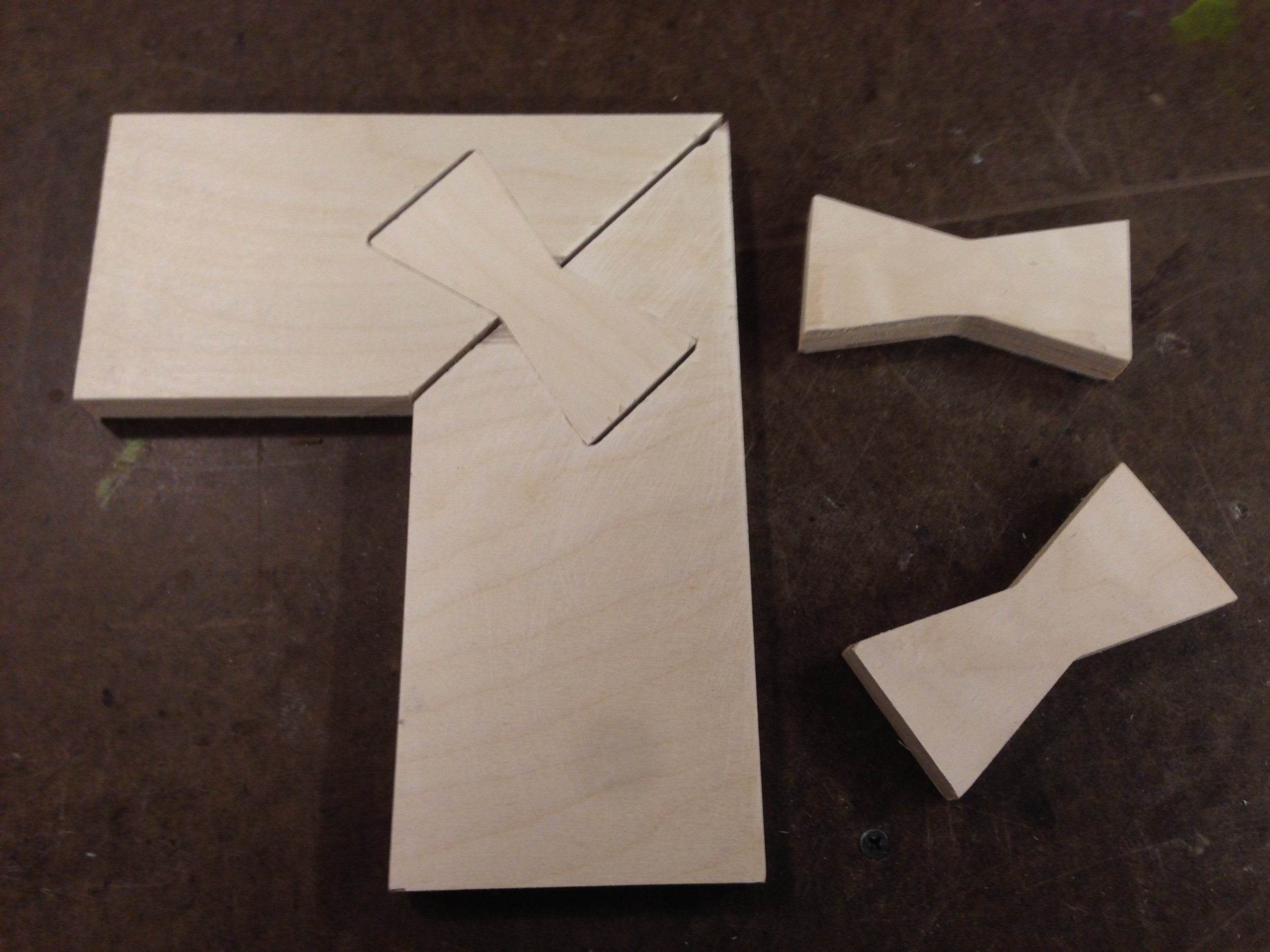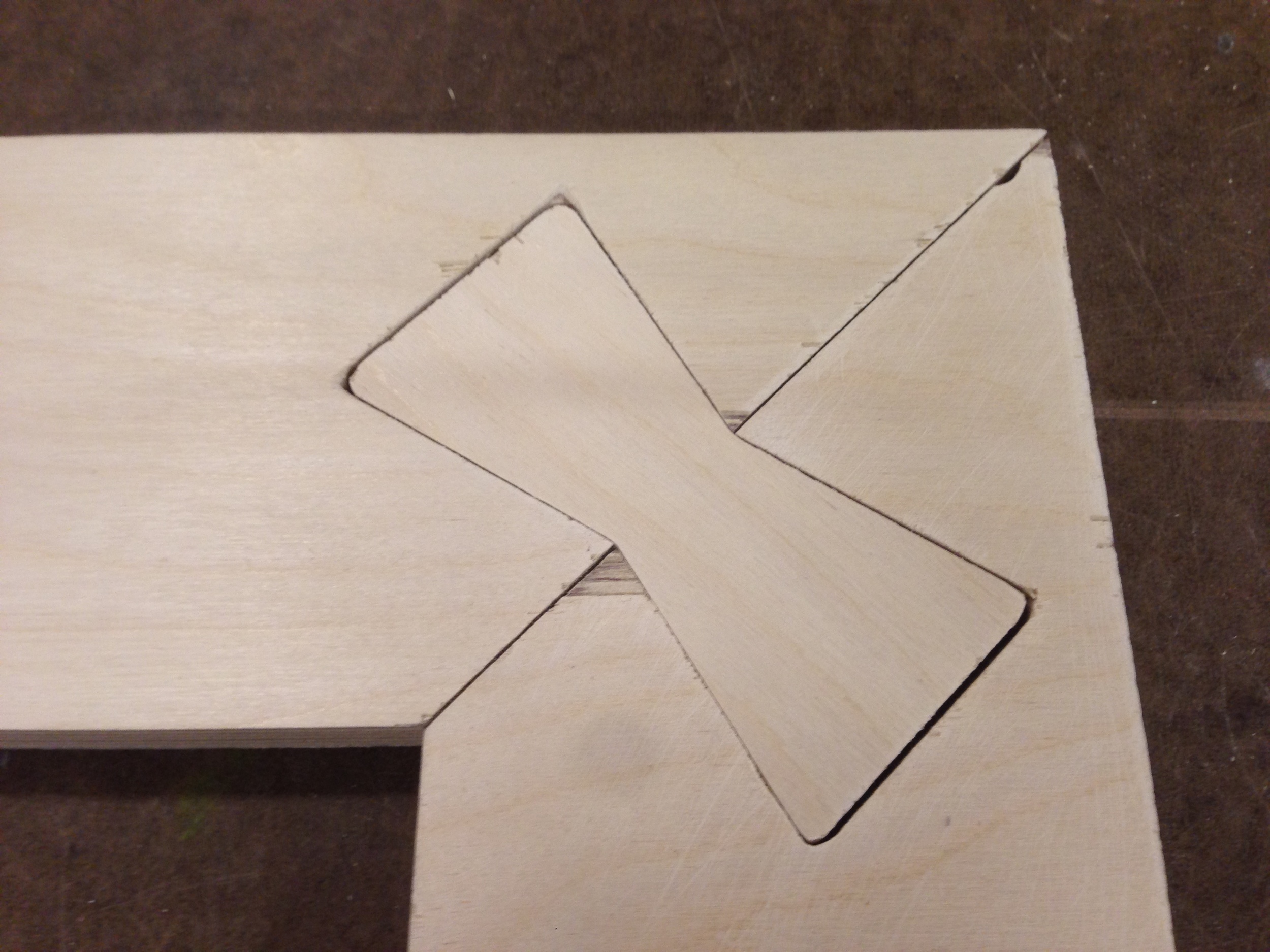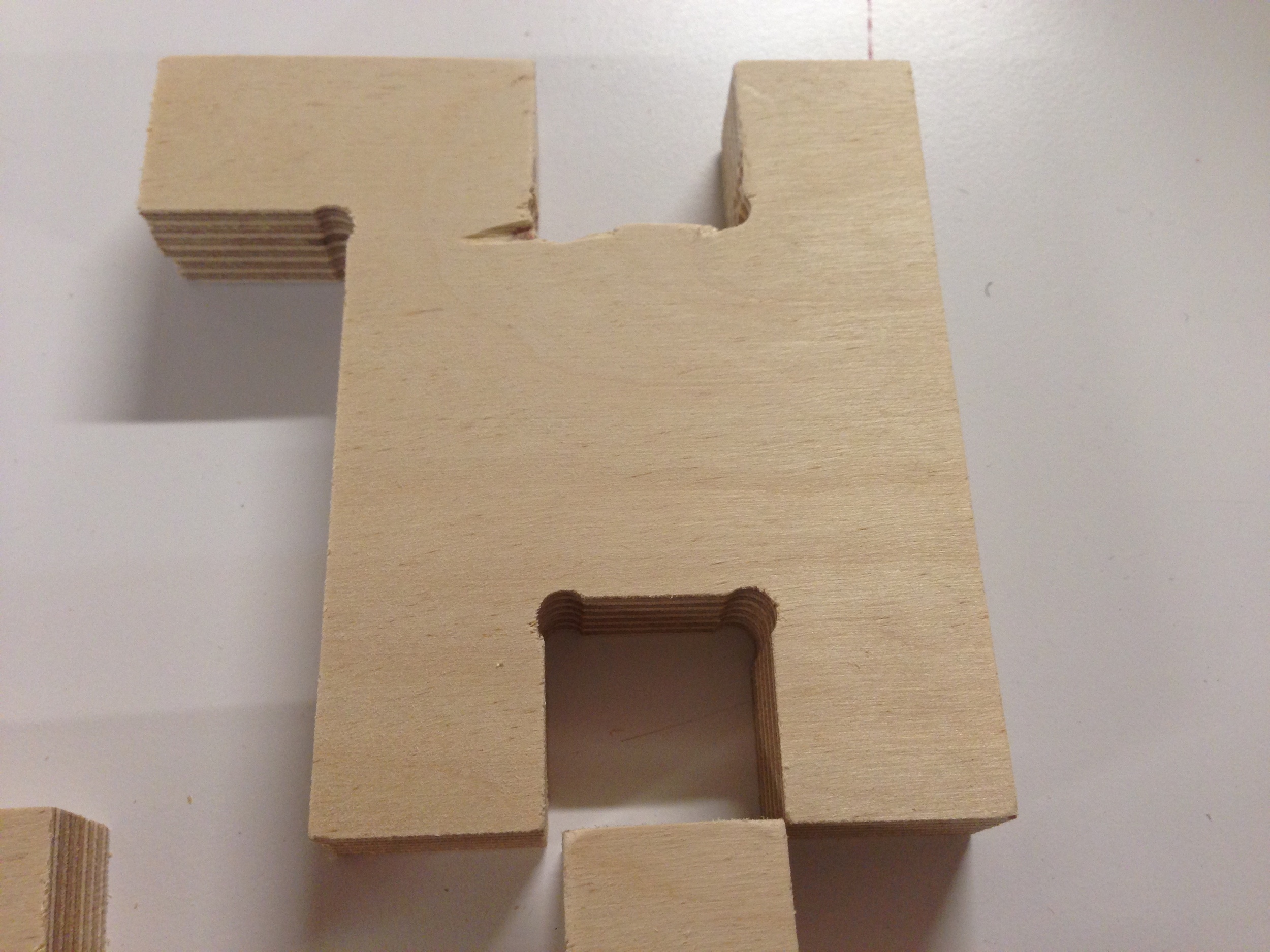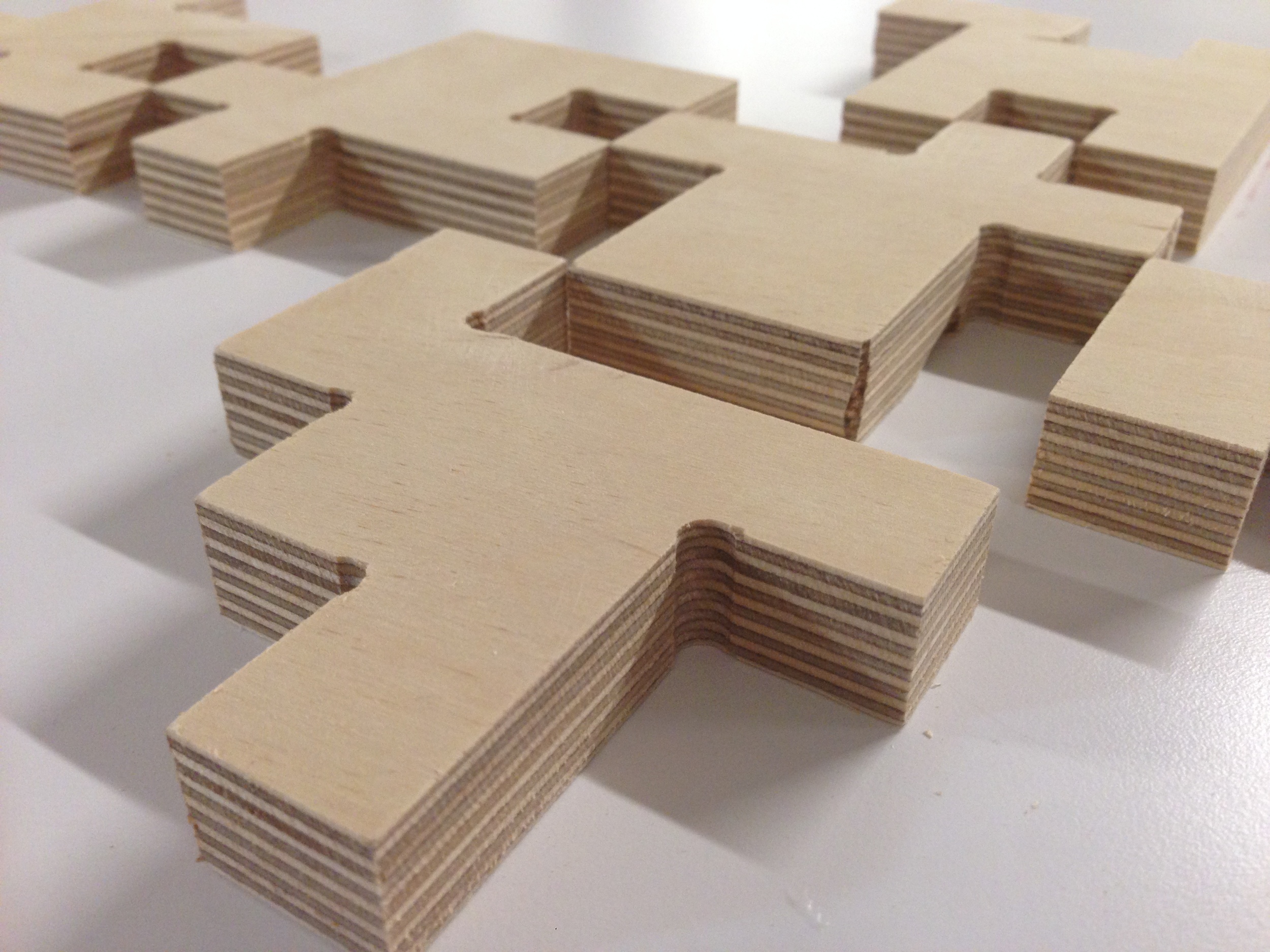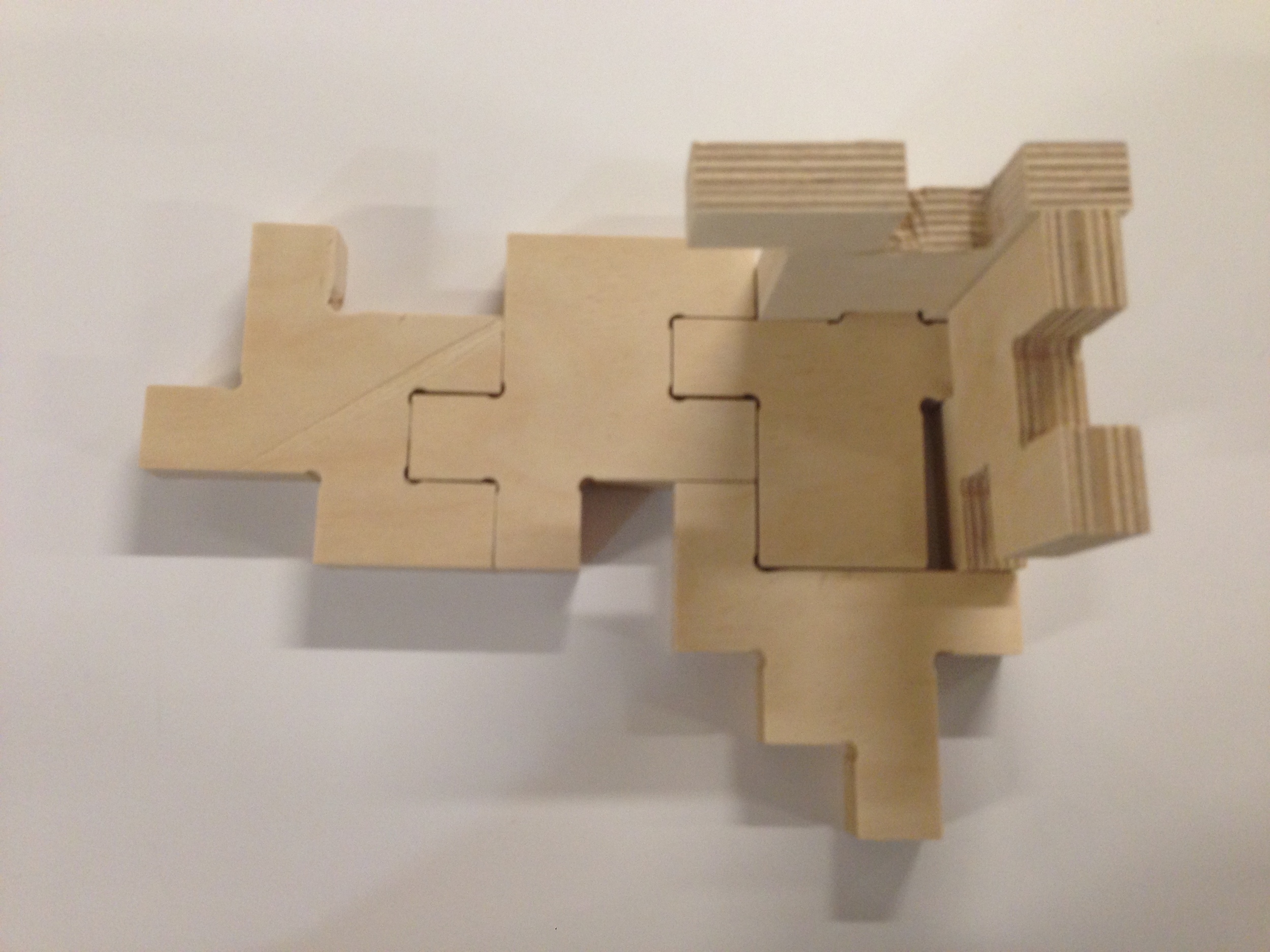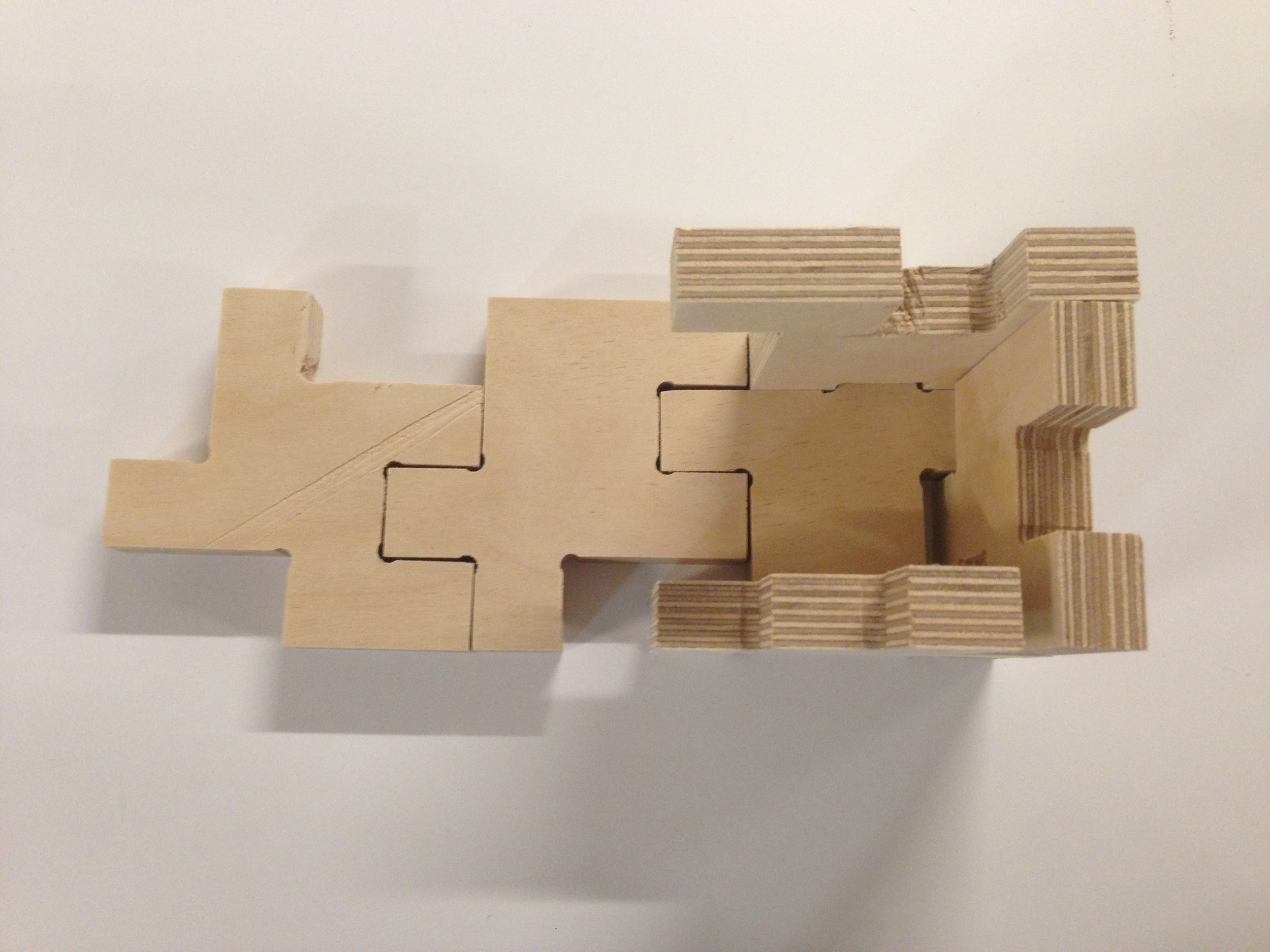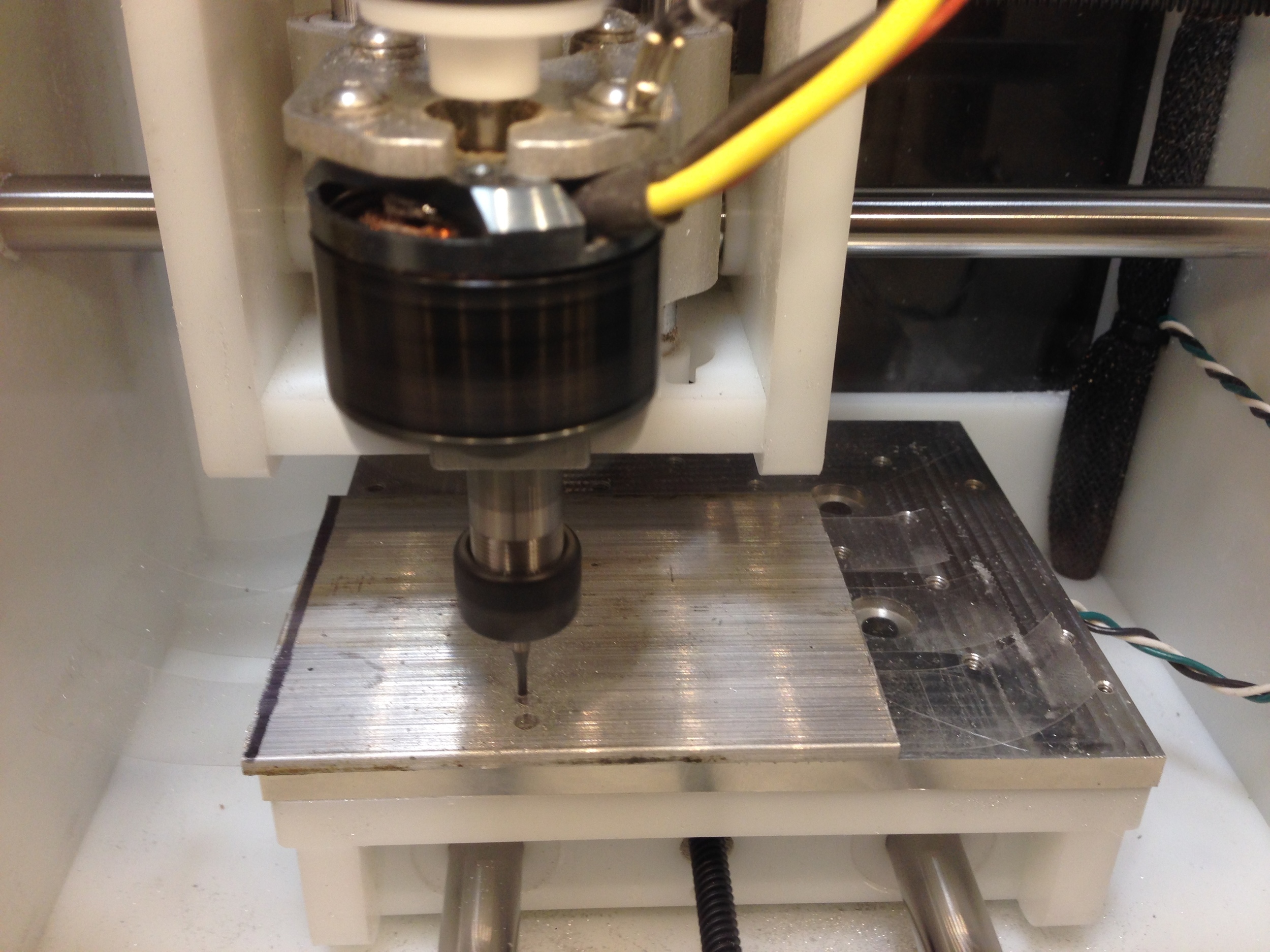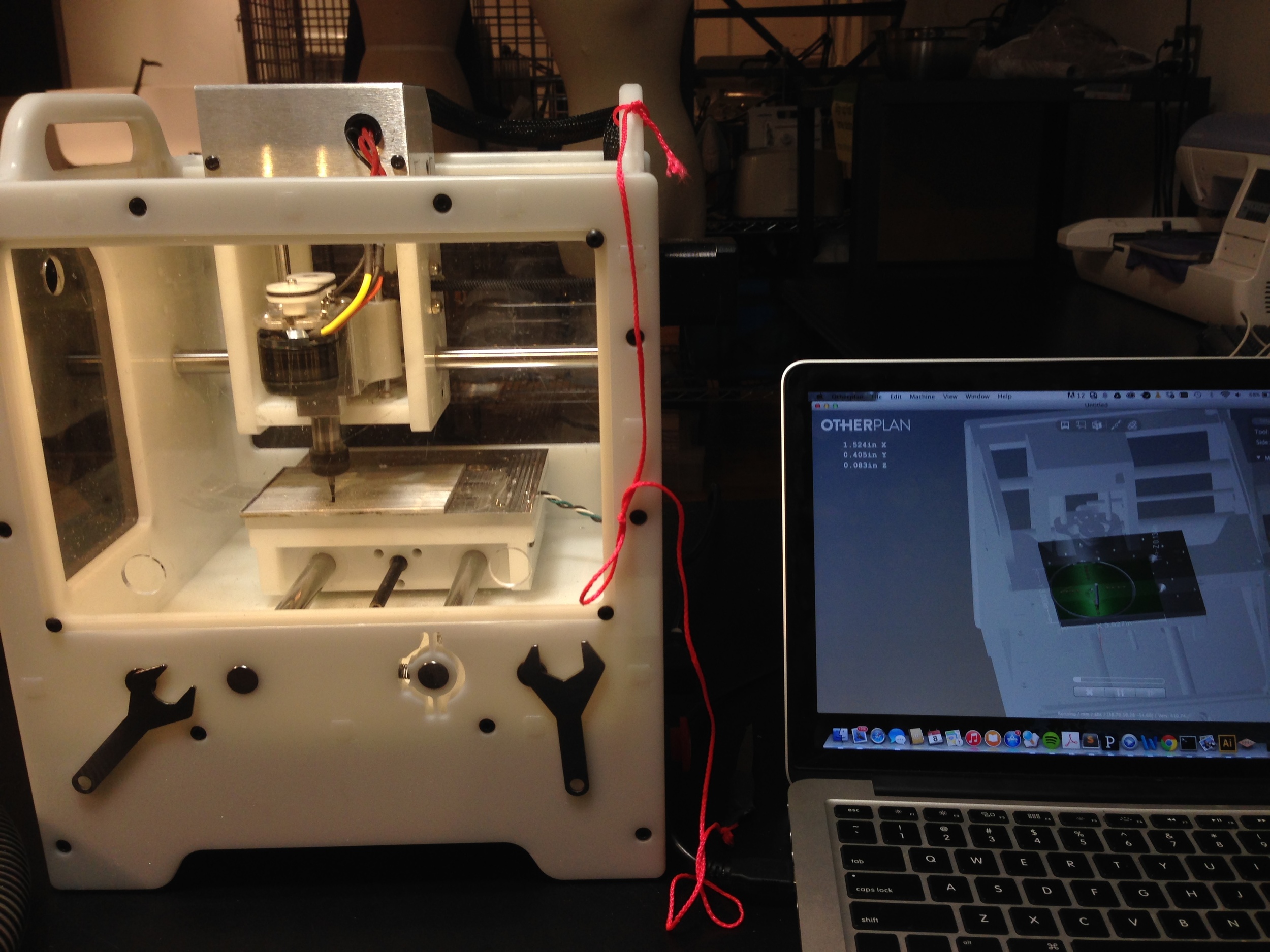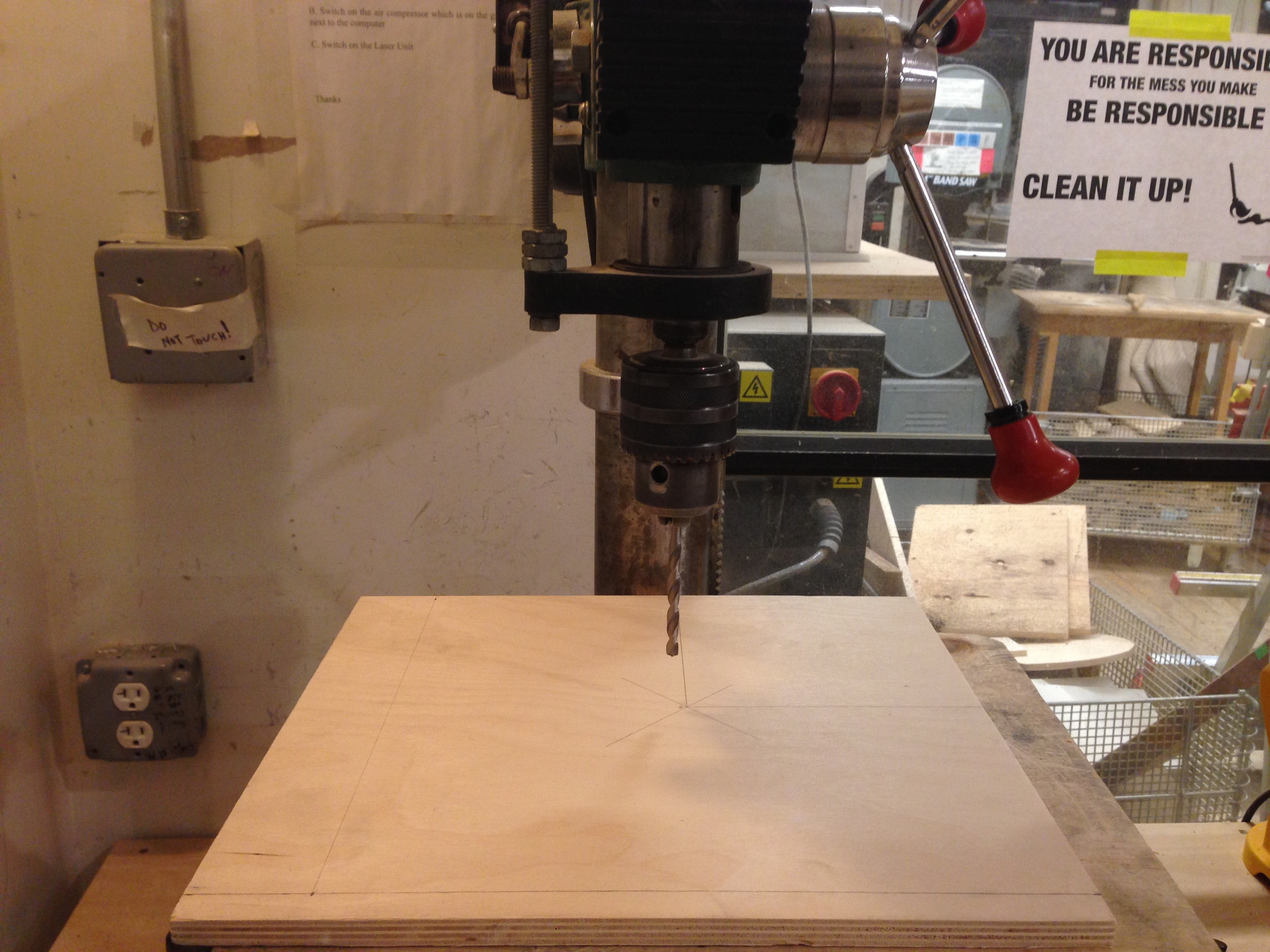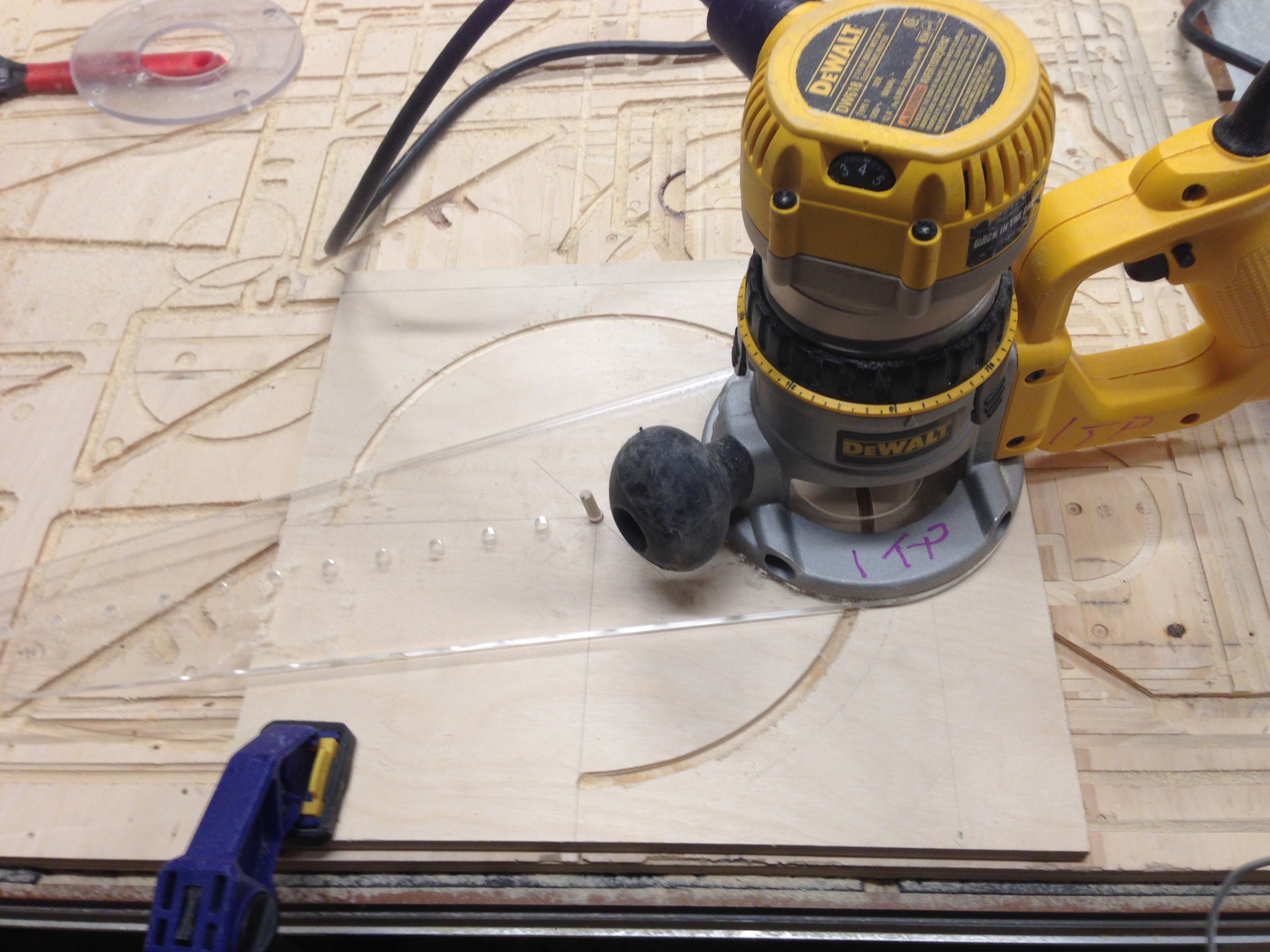The new documentation is here: http://1023.io/night-forest/
Subtraction
4 Axis Mill Project Proposal
I want to build something that has a contrast of white and black Delrin. http://www.shapeways.com/product/294G463U2/turner-s-cube
https://www.behance.net/gallery/7029821/Duality-Chess-Piece
4-Axis Mill
Metal Lathe
This week, we used metal lathe, which is very different from wood lathe. With wood lathe, we need to control the material manually. We can feel the material with our chisels. I guess I like wood lathe more. But on the other hand, metal lathe is easier to use, because we only need to spinning wheels. Also I like the final aluminum piece. Its surface is glossy and smooth.
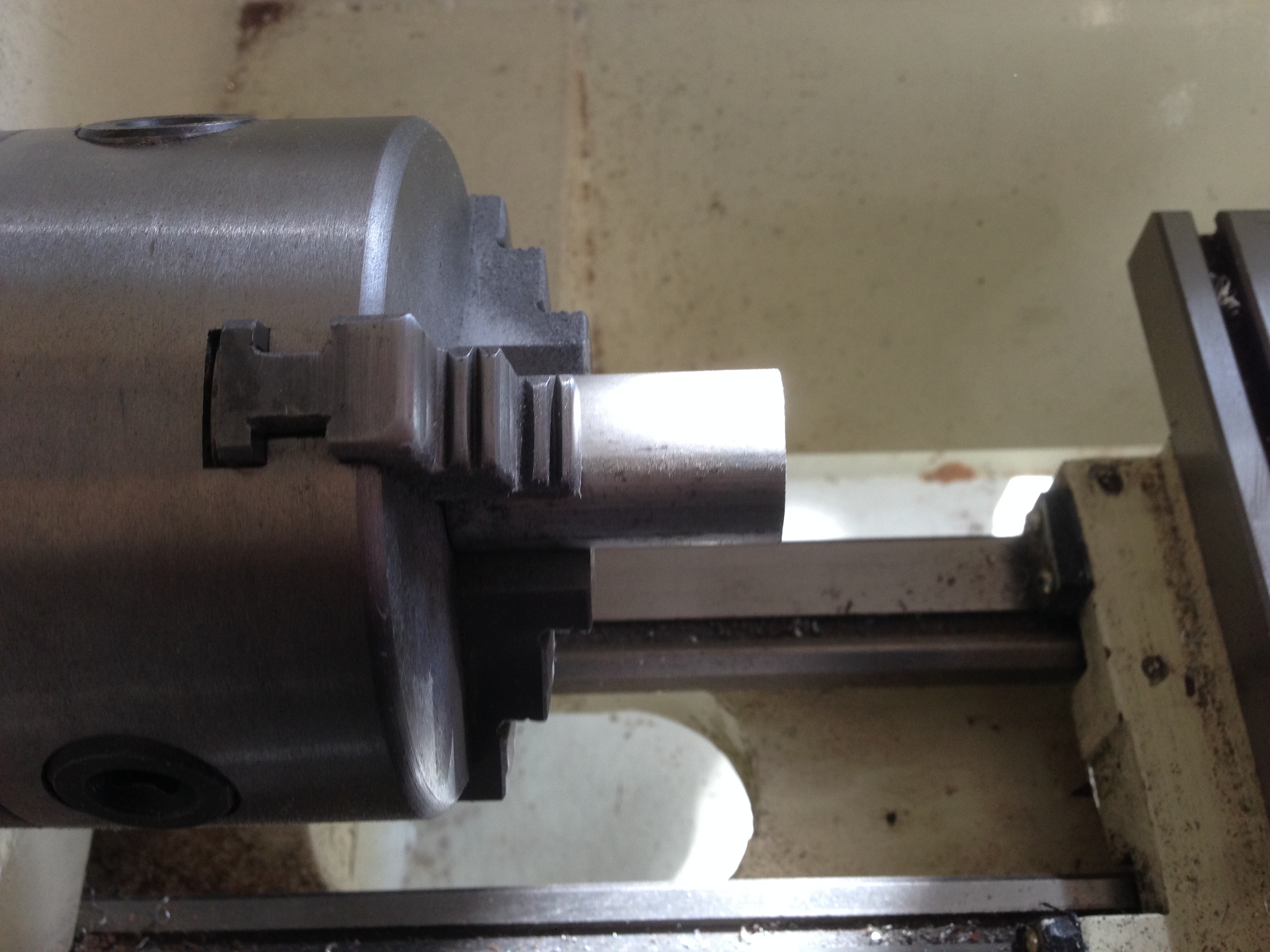
Wood Lathe Part 2
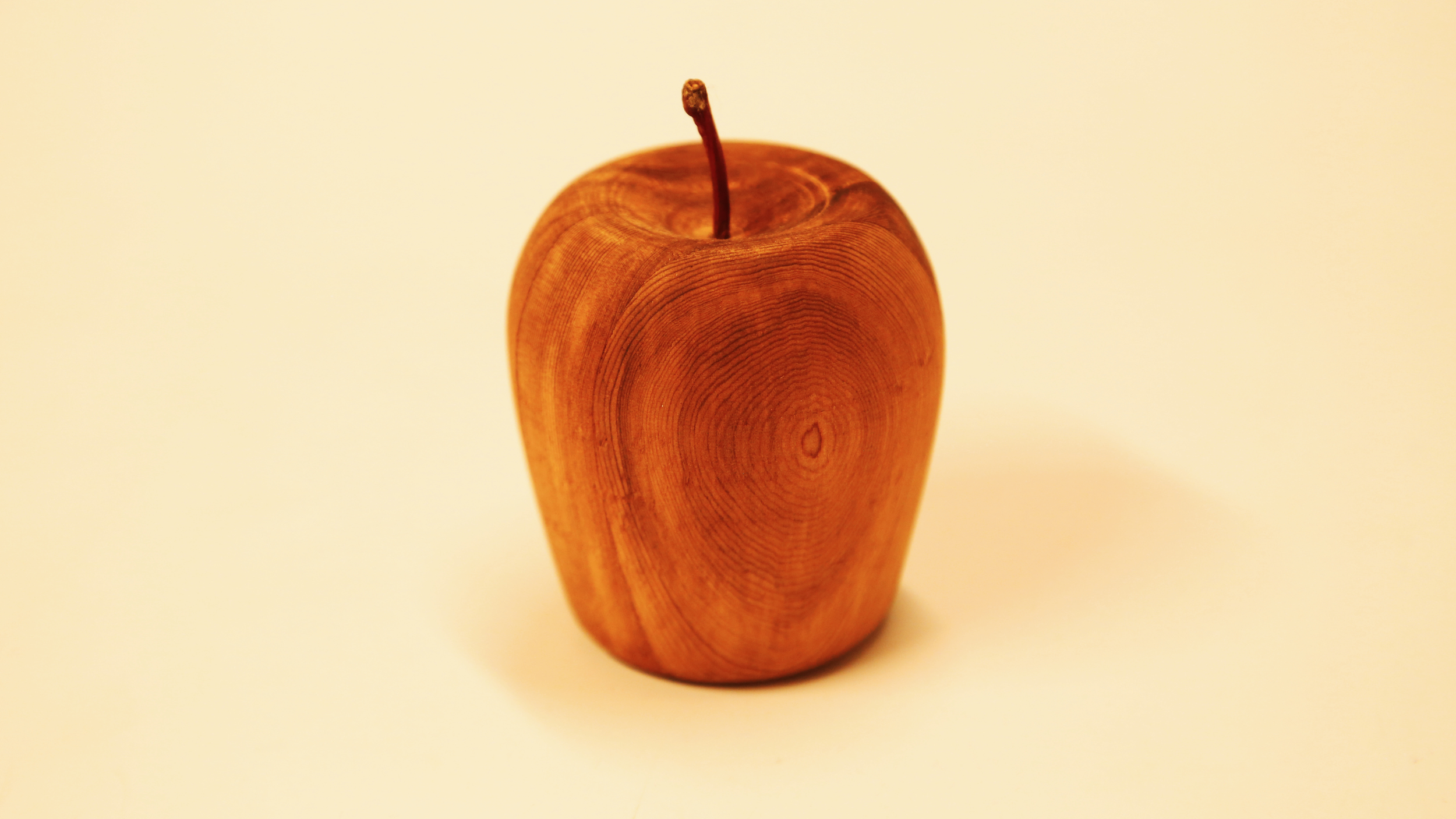 This week, I used 4 jaw chuck to make a wooden apple.
This week, I used 4 jaw chuck to make a wooden apple.
One very useful tip that Gabriel told me is that the base for the 4 jaw chuck should be deeper and round perfectly, so the chuck can hold the material better.
I made a base on the material and then put it in the 4 jaw chuck, and I found the material is not perfectly centered anymore. So I have to round it again.
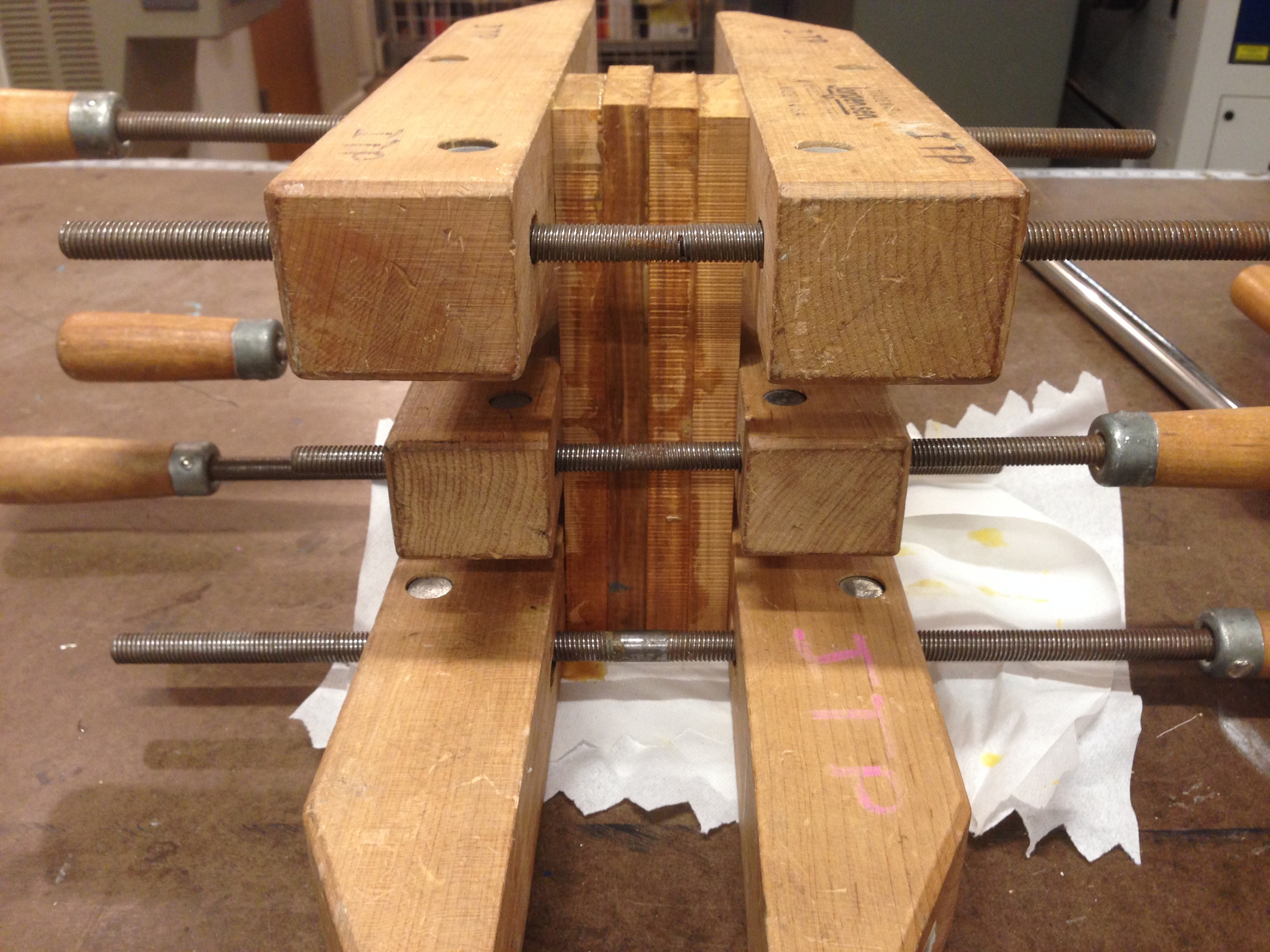
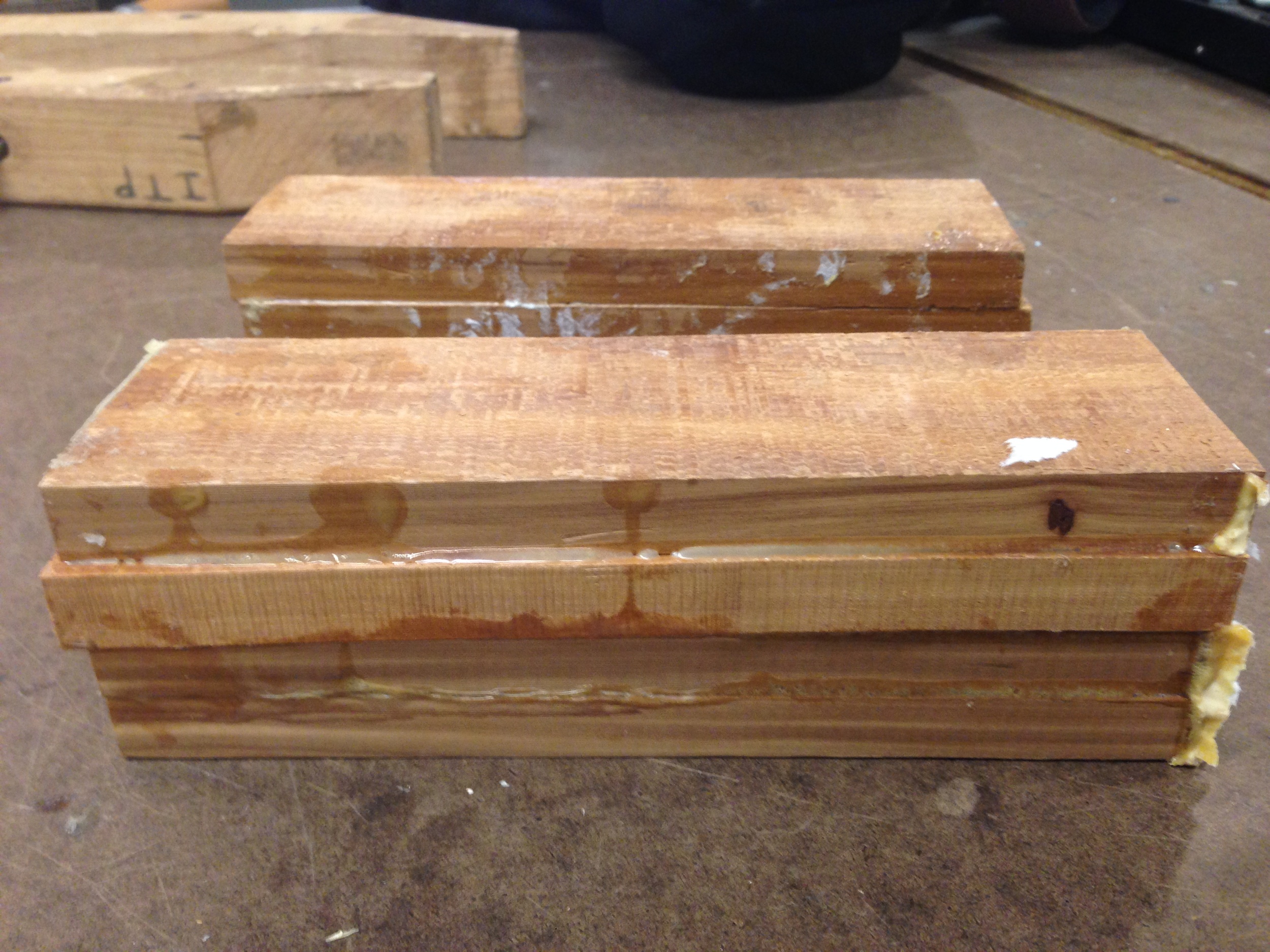
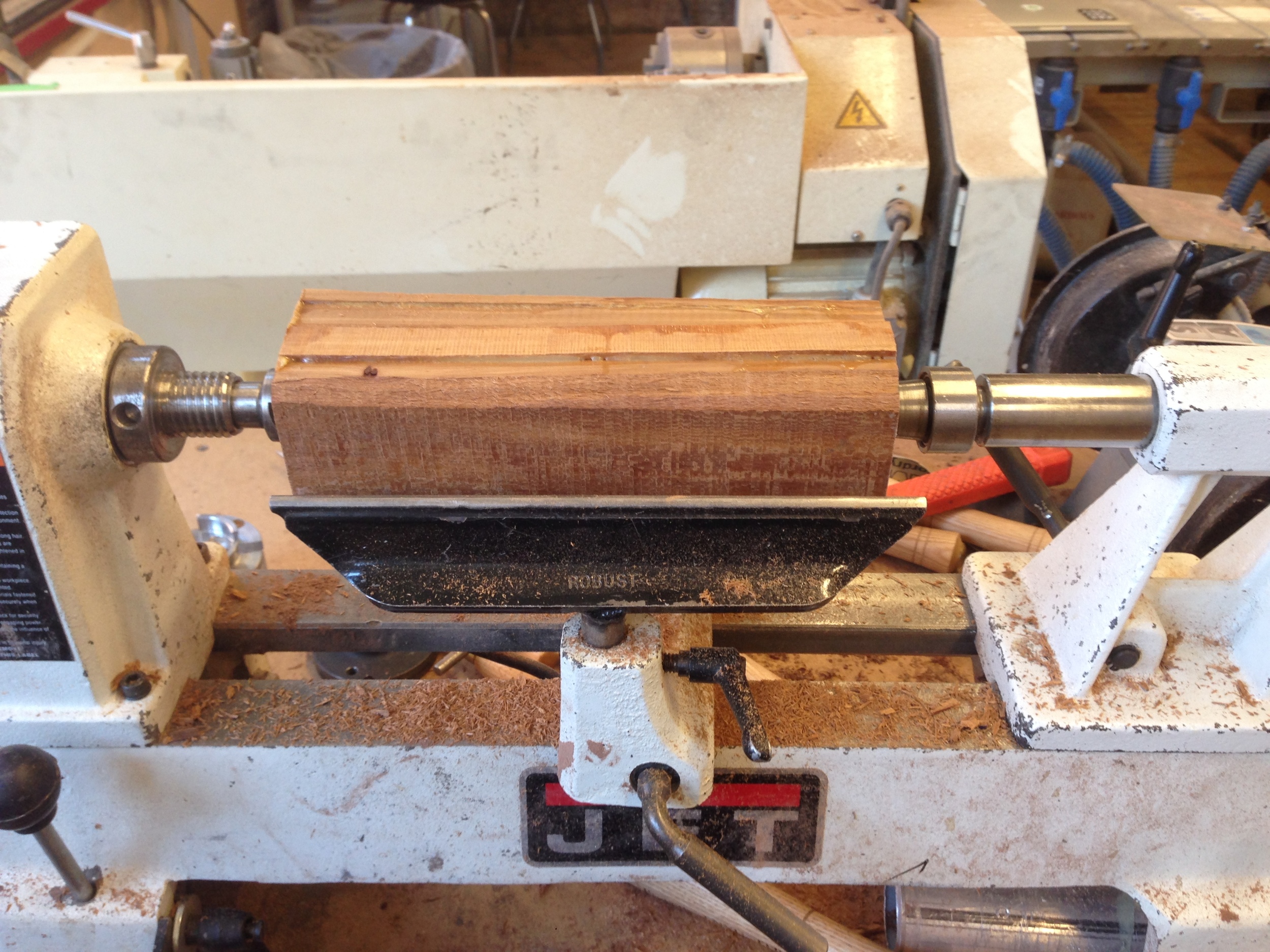
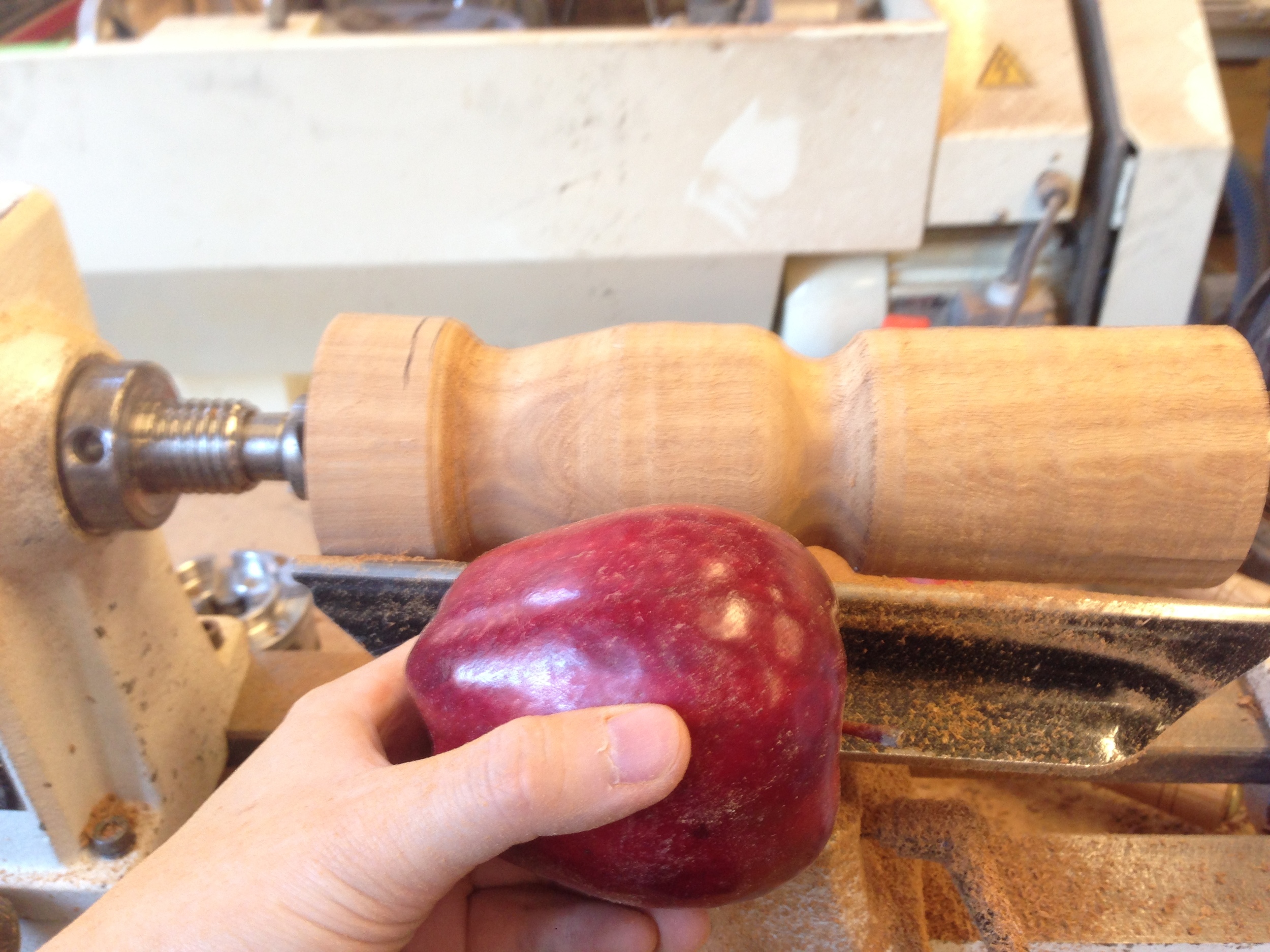
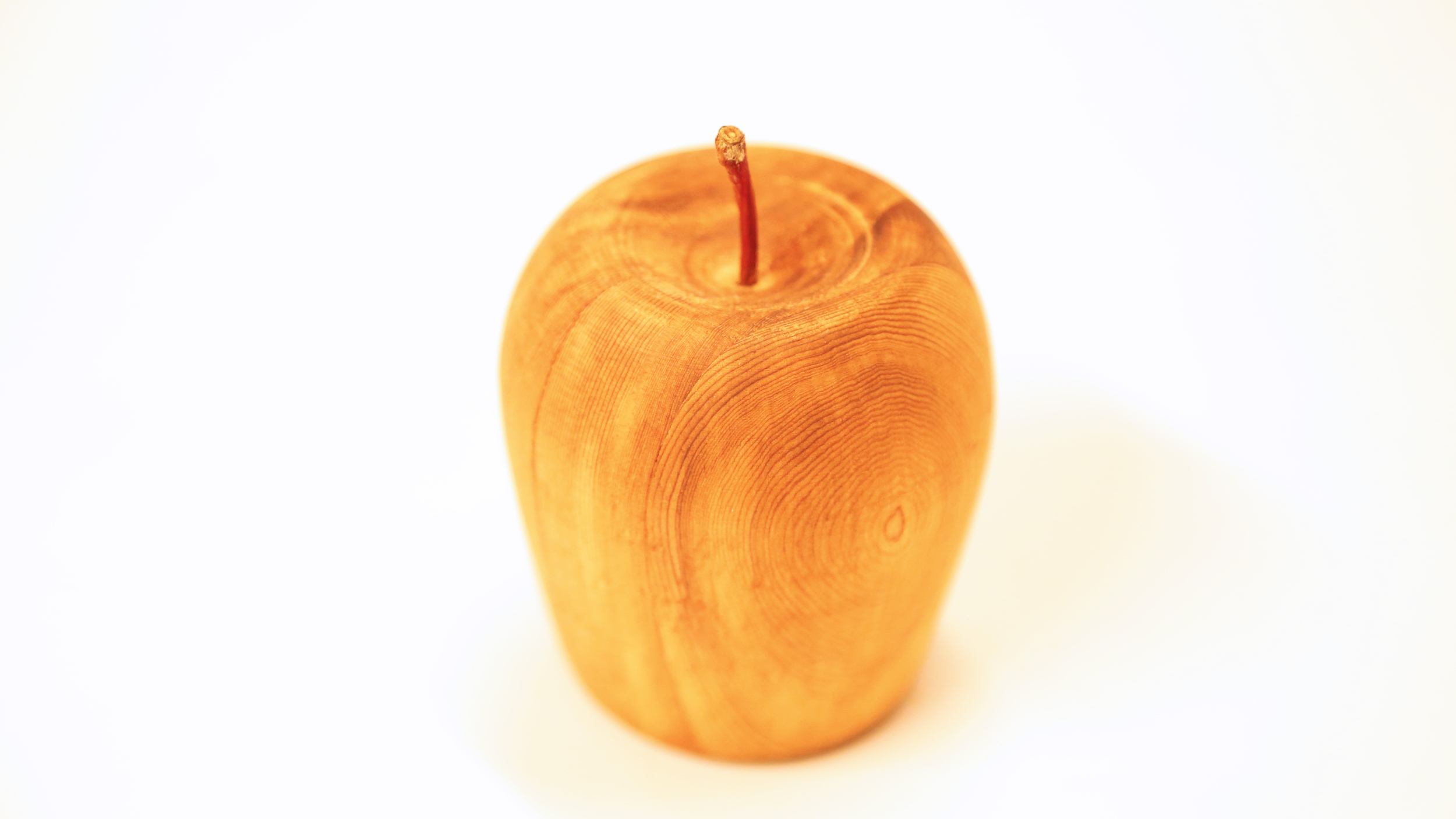
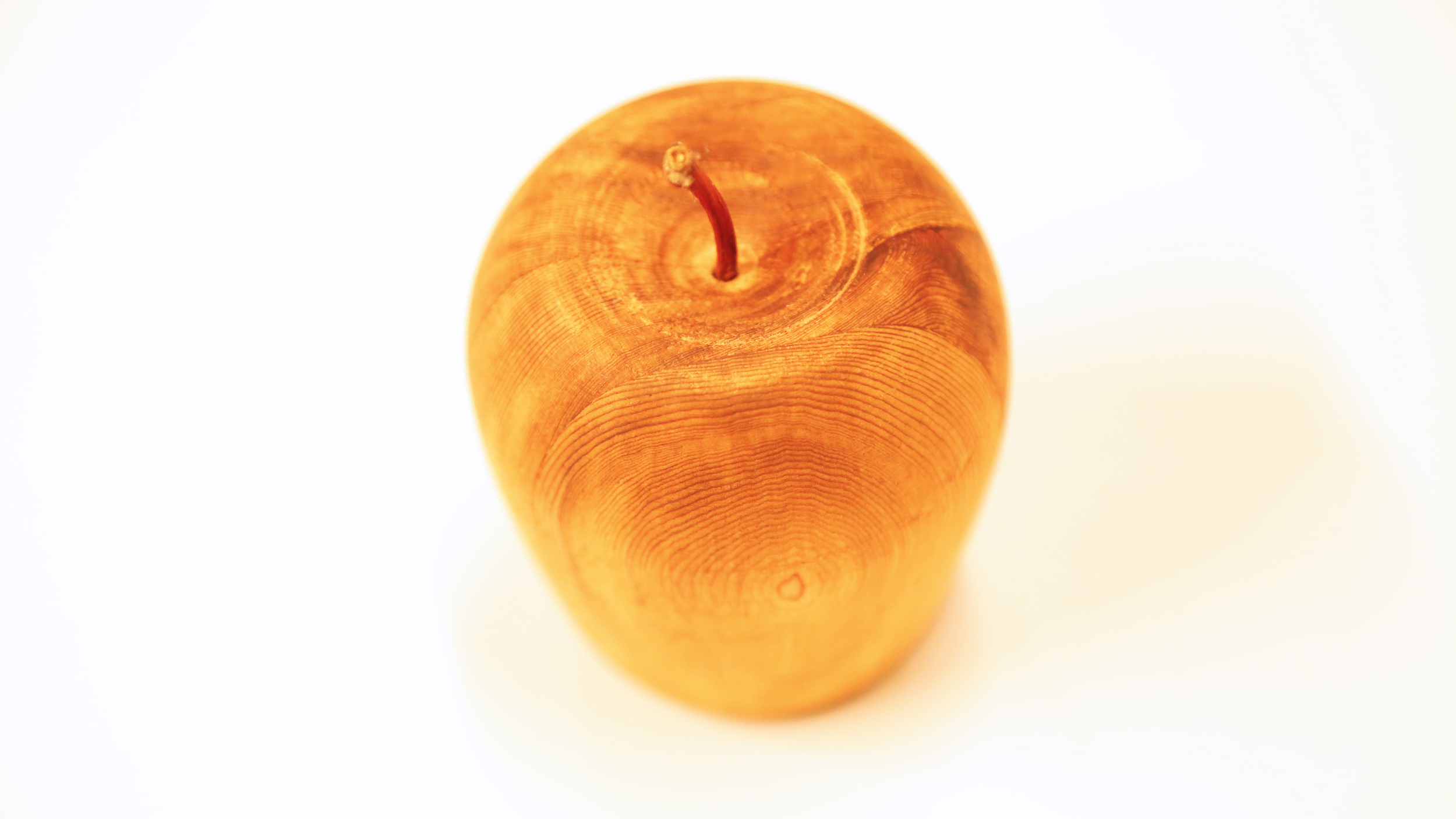
Lathe
 This week, we used lathe to make a foosball player. I made a Japanese girl. Next time, I will sand it more, so the surface will be smoother and goes better with the pigment. And I will make more changes on the body. Also, it needs time to get better on lathe. I should to check the material is locked perfect on the lathe constantly. I should pay more attention to make the smaller holes in the center of the body. Here's my progress.
This week, we used lathe to make a foosball player. I made a Japanese girl. Next time, I will sand it more, so the surface will be smoother and goes better with the pigment. And I will make more changes on the body. Also, it needs time to get better on lathe. I should to check the material is locked perfect on the lathe constantly. I should pay more attention to make the smaller holes in the center of the body. Here's my progress.
I used tape to fixate material on the board, I'm not sure it's a right thing to do, but it helps to keep material from moving.
Introduction to Computer Media, Subtraction
CNC Puppy Lamp
For its head, I built four joints and glued them together. At first I want to build the bind joint. But I forget to pocket the finger shape inside, I thought there are just rectangle shape pocket inside. I spent some time to figure out how the four joints can make a perfect square and also I can put the bottom square in it. So after I built the joint, they fit really well, and they are very tight after I glued them together.
And there is another joint connecting the head and its neck. For the body part, I used bolts and nuts to put legs and tail together. I used two bolts on each side. And I drilled a slightly smaller hole on the tail to keep the two bolts stay still inside. Otherwise, they won't be tight enough. Also I got the bulb, socket, and the wire. And I also get the chance to use my Othermill assignment.
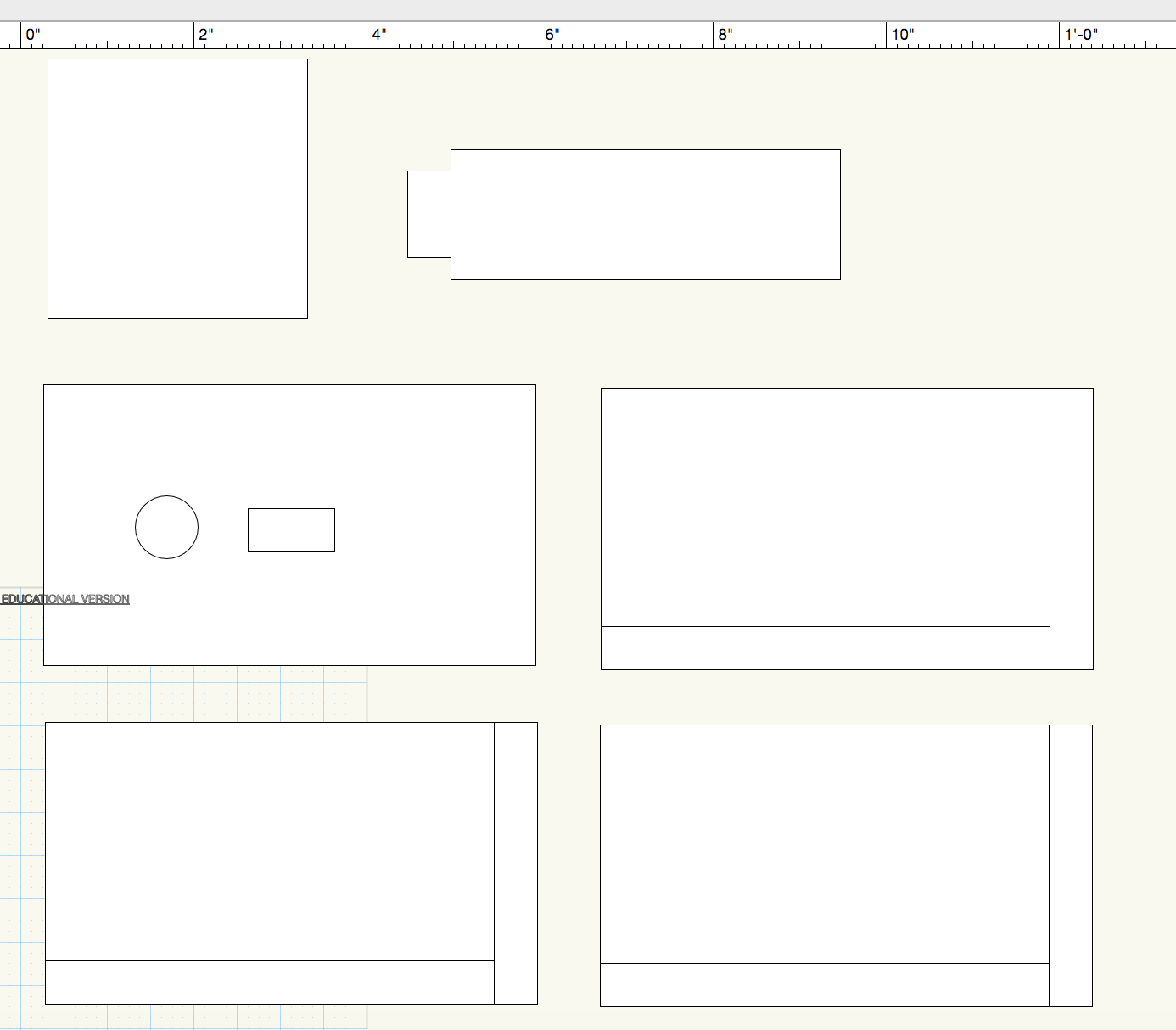
This is my first complete fabrication work. I'm very exited. I learned how to make different joints, and I'm getting more and more familiar with CNC machine each time.
Process

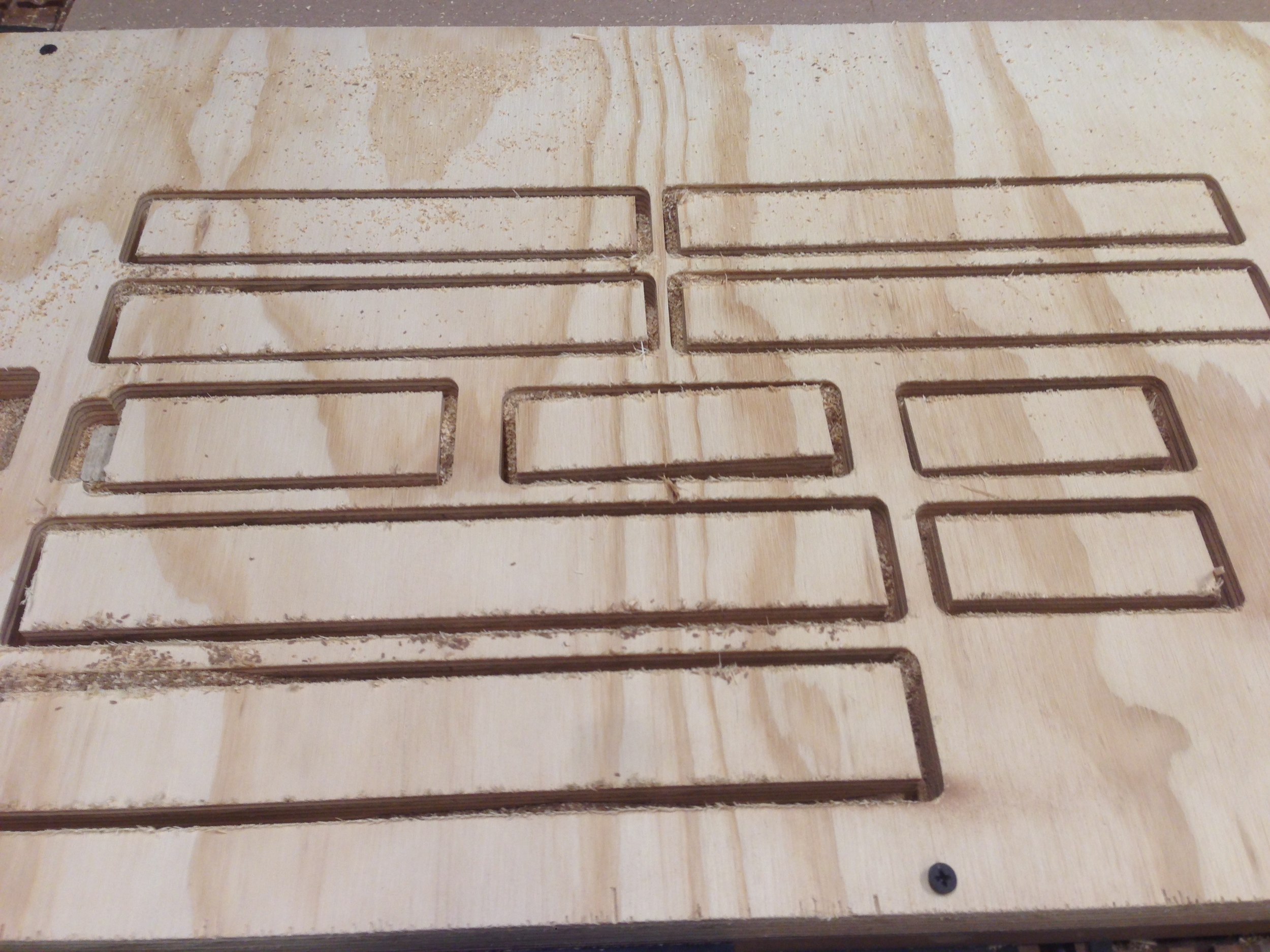
CNC Miter Joint with Butterfly Key
This joint uses a butterfly key to hold the two pieces together. The thickness of the key equals to the thickness of the material. I found that butterfly joint is very tight. Once clamp it together, it's hard to take it apart. One problem is that my material has different thicknesses at different area, or because my material is not flat, even though I used nail to fixate it on the board. So some shapes were cut very well, but some shapes were not cut out completely. It took me much time to use a knife to pull the shape out of the wooden material. Next time, I will measure the material for several times, and add 0.001'' to the thickness.
Also because the butterfly key has sharp angle but the pocketed area has round corner, the joint doesn't fit very well. There's a thin gap between them, but it's very tight though.
CNC Project Proposal
https://www.youtube.com/watch?v=vLScMy45mTs http://www.makecnc.com/the-fairytale-castle.php
http://blog.cncking.com/kids-medieval-castle-new-cnc-laser-project/
CNC Square Puzzle
I wanted to use CNC to make a square puzzle this week. My inspiration is the square puzzle from ShopRobot. The square puzzle has six parts. Here's the design of every part.

The ideal plywood will be 1'' thick. But I can't find 1 inch plywood in a short time, so I used 0.685''- thick plywood. It can work, but the six parts can not fit perfectly.
In addition, I would tape the material down. Because when CNC almost finished cutting one part, the part was no longer attached to big plywood board and would be lifted by the spinning bit, which could cut the wood which shouldn't be cut. This thing happened to the following part.
The last thing is that I should pay more attention to snap collet into collet nut perfectly. And when I'm using wrenches, the bigger wrench should fit the collet fully before I tighten the bit. Besides these three things, I'm satisfied with the work. It feels so good to making serval parts that can fit into each other.

The OtherMill
The OtherMill is a is a desktop 3 axis (X, Y, Z) CNC machine. By using a software called OtherPlan, it can extend SVG 2D files into 3D shape. The OtherMill is vert portable, and it can handle many kinds of materials. This week, we were using aluminum to cutout and engrave some shapes. 1. Attaching End Mill
I accidentally brought 1/16 flat mill, which works more slowly but does a very fine job.
2. Homing and Finding Origin(x, y, z)
3. Attaching Material
4. Setting Material Size and Type
5. set up tools
6. import svg.file
7. start cutting
I think it will be good if the Otherplan interface can show the rest of working time. For now, users can only see the speed and other numbers. Although it has a time bar, but it will be even better if it has the precise time.
Subtraction Week 1: Router
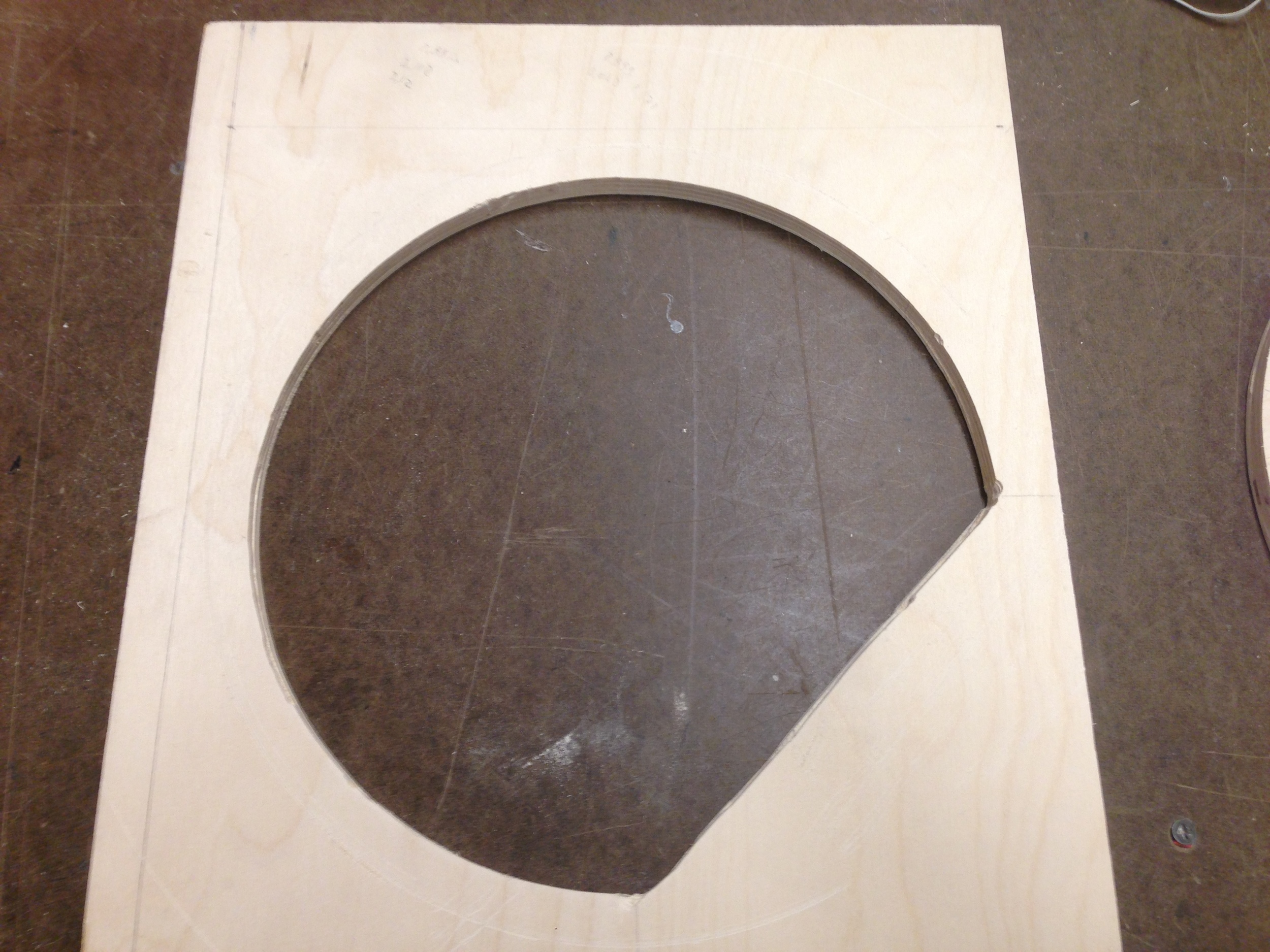 This week's Skill Builders is to use a powerful and affordable tool - router - to recreate a shape. After making it, I fully understood this sentence: the only way to learn the tools is to use them. Cause I made mistakes when I was using the router, and that's how I got to know routers.
This week's Skill Builders is to use a powerful and affordable tool - router - to recreate a shape. After making it, I fully understood this sentence: the only way to learn the tools is to use them. Cause I made mistakes when I was using the router, and that's how I got to know routers.
If I can make it again, I will definitely improve two things. First of all, when I attached the circle jig to the router, I chose the wrong side of the circle jig, so the four screws stood out of the surface which made the router's bottom surface not flat. This is a stupid mistake, and I didn't notice it until the end........! The funny part is that my photo documented my mistake perfectly.... Because of this mistake, I can't move the router smoothly, so the cutting edge is not good. If I use a router again, I will double check the bottom surface.
The second thing is the setup for the plywood, router and jig. I used a clamp to hold the piece of plywood, but the clamp always gets in the way of the long jig. I have to stop once to screw the 3/4 circle. Next time, I will choose bigger plywood to keep clamps far away from jig, or use two nails to fixate plywood. Also I will use two clamps instead of one to hold plywood completely.
Because the bottom surface is not flat, the straight cutting line is so uneven. I will be careful next time. Also while something is not going well, instead of continuing doing it, I should just stop and check tools and setup, and think about how to make it right.
Although the final piece is not perfect, but I enjoyed the process, I also learned something that became my tips for my future work. I feel like I'm one step closer to an artsy craftsman.:D
